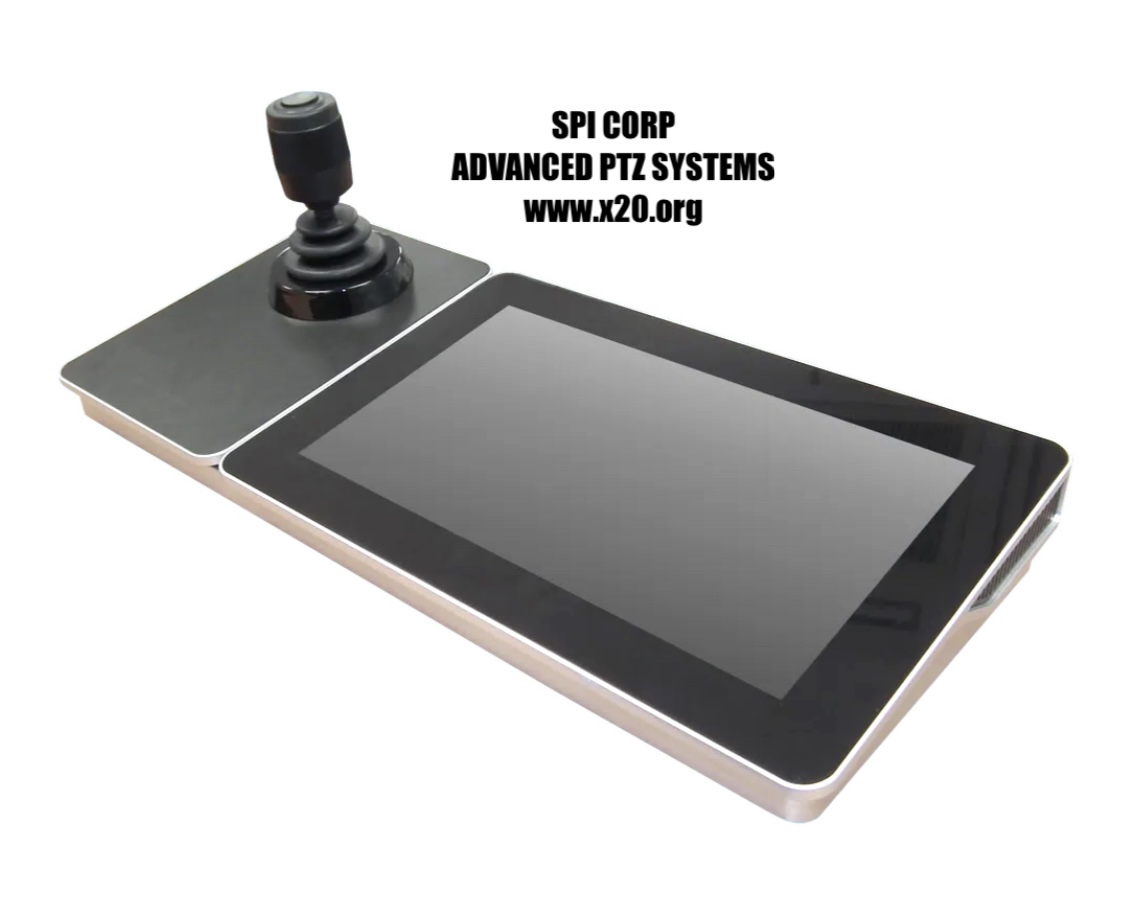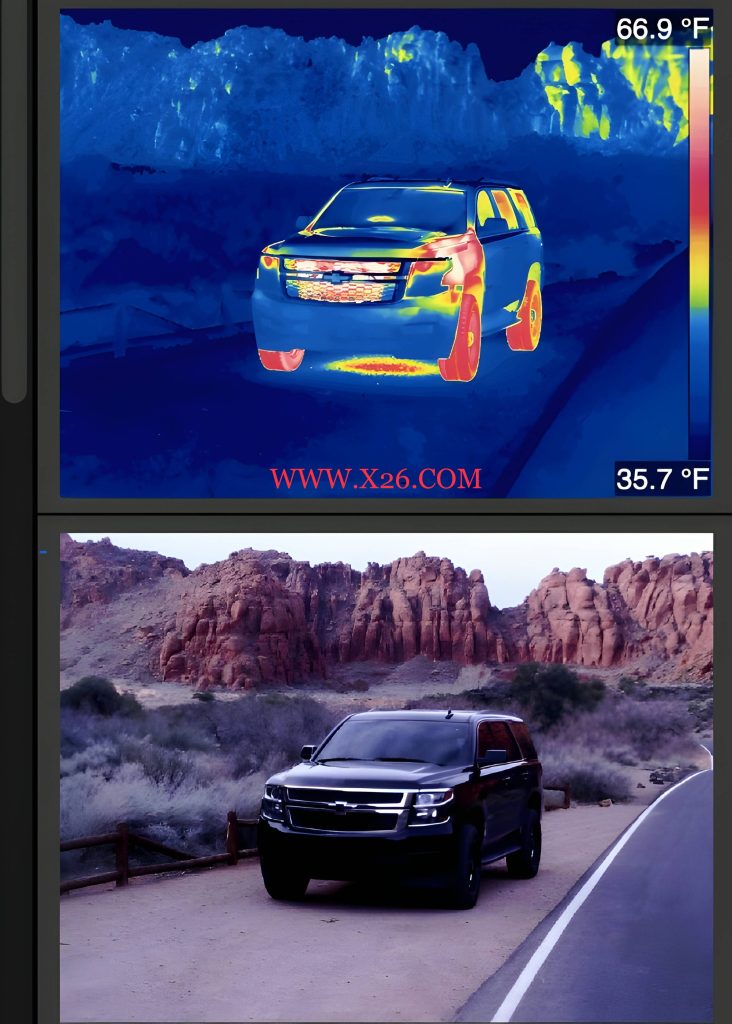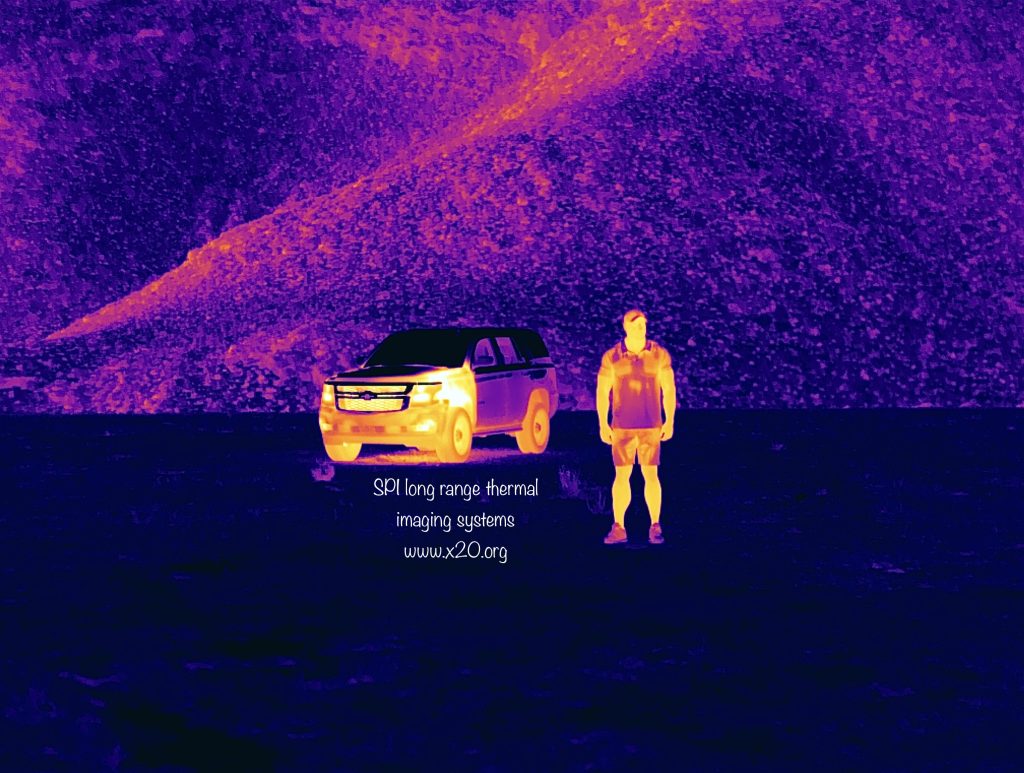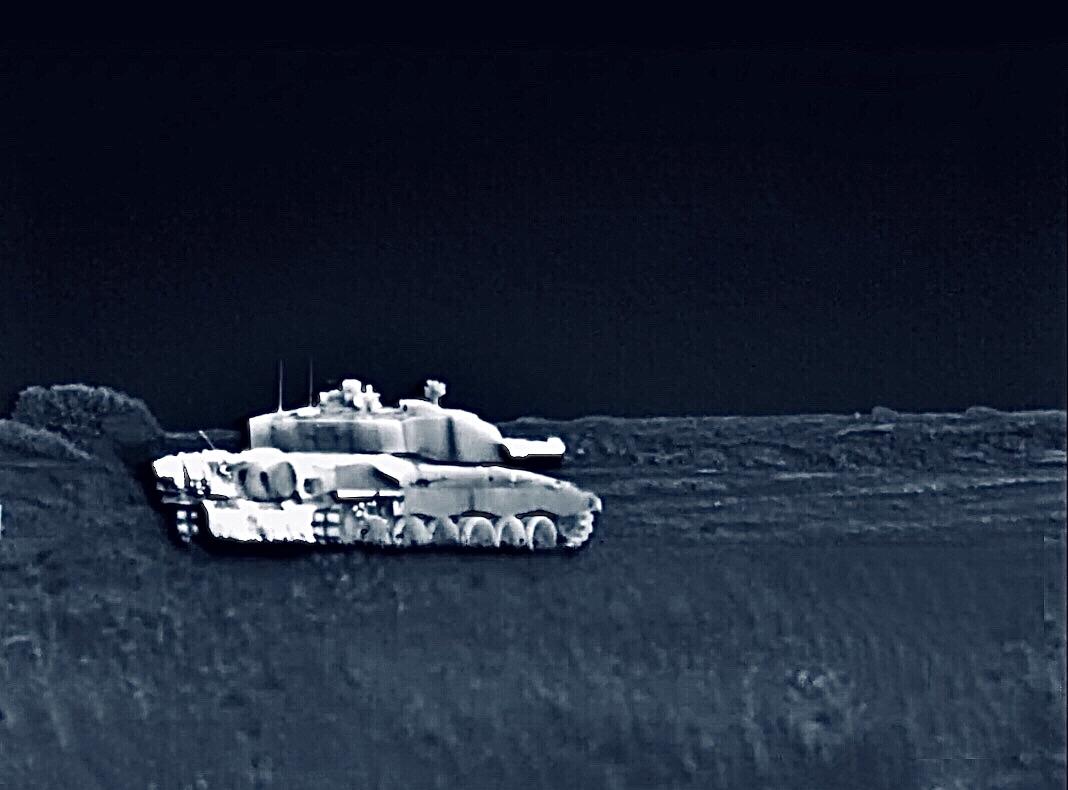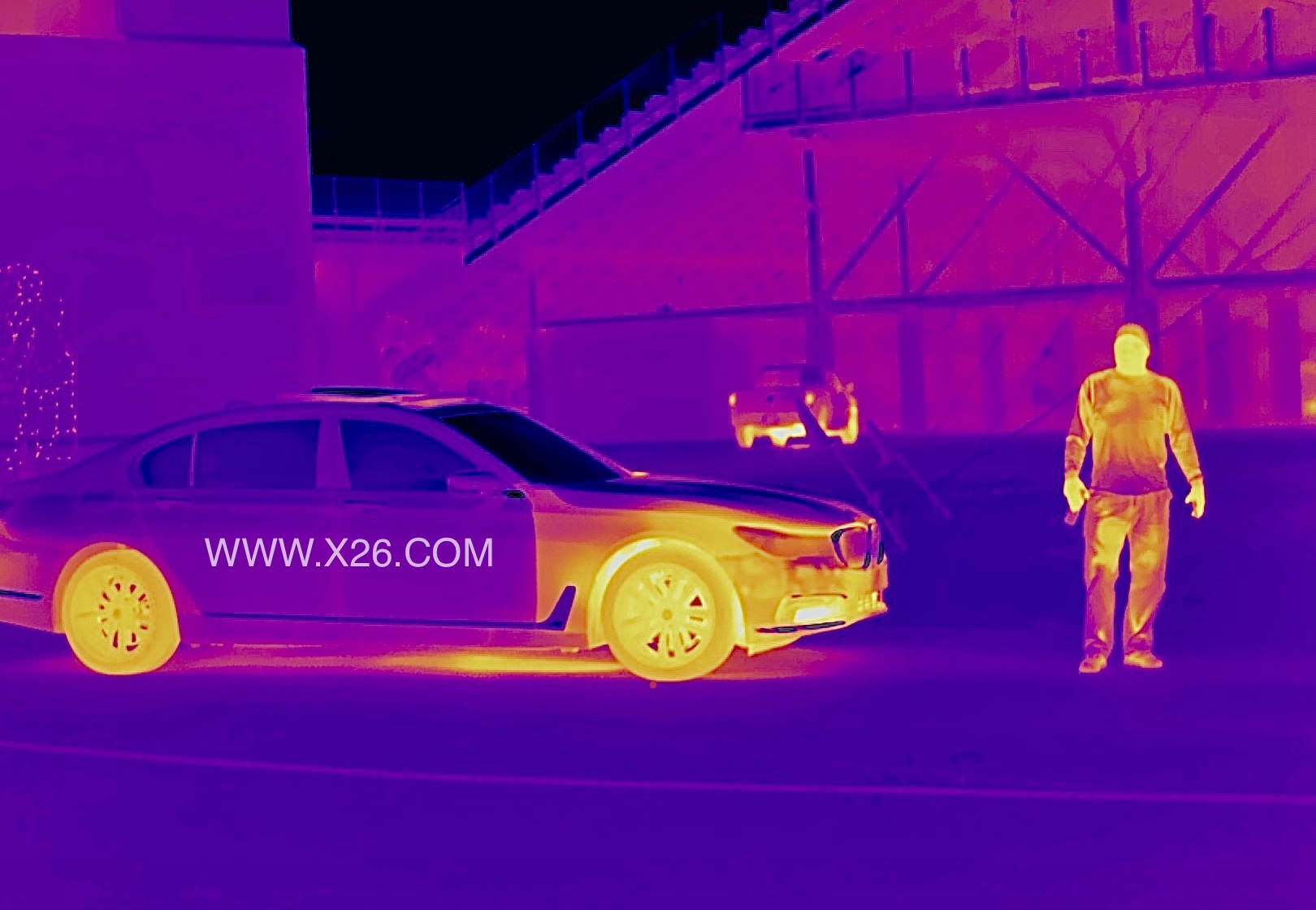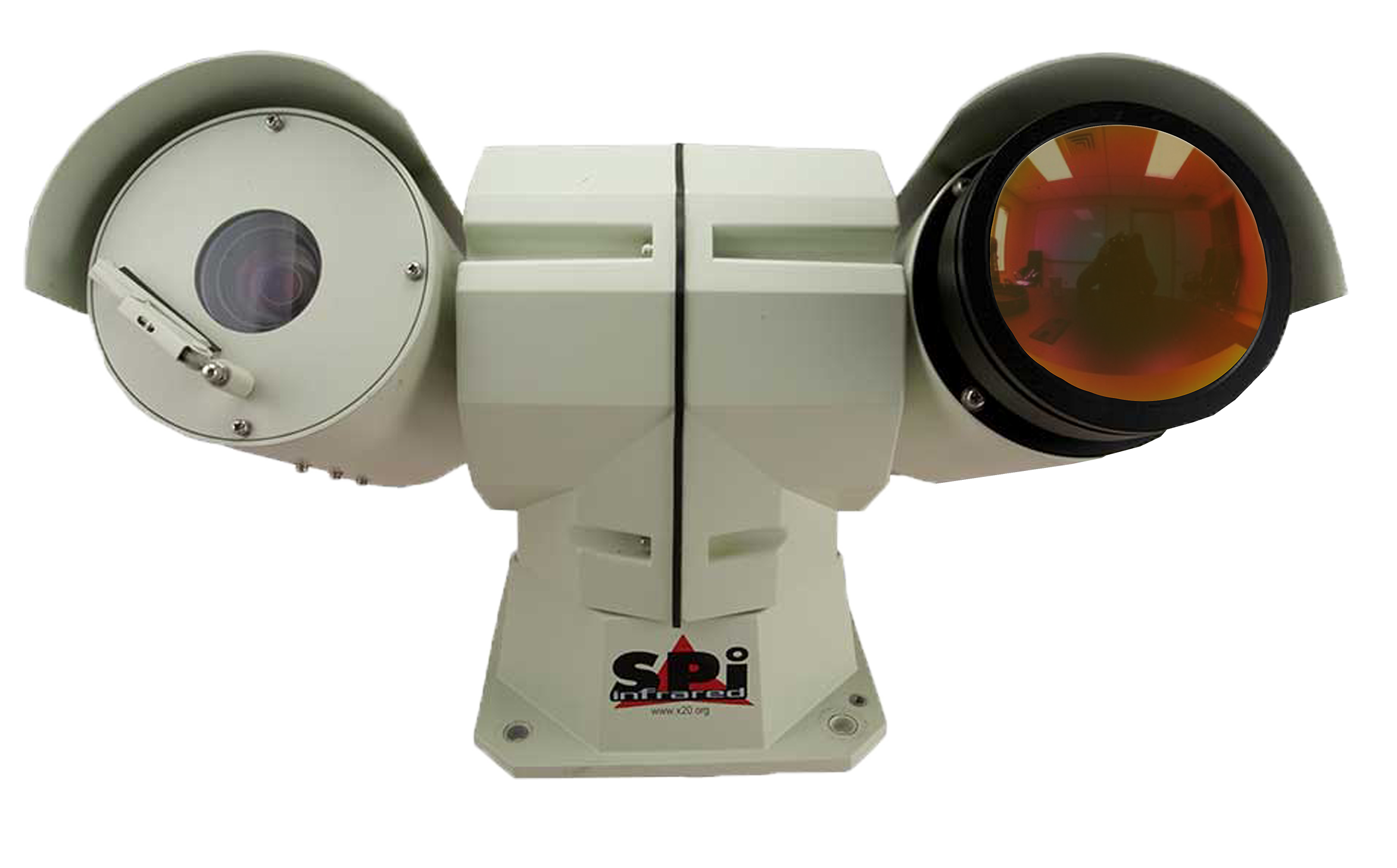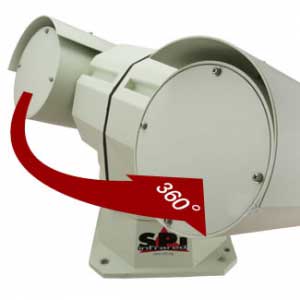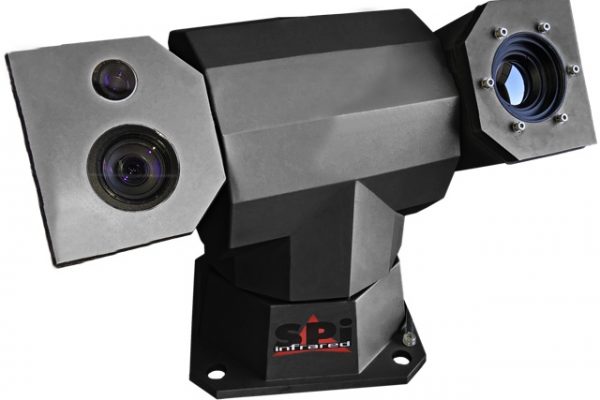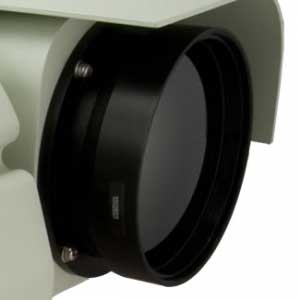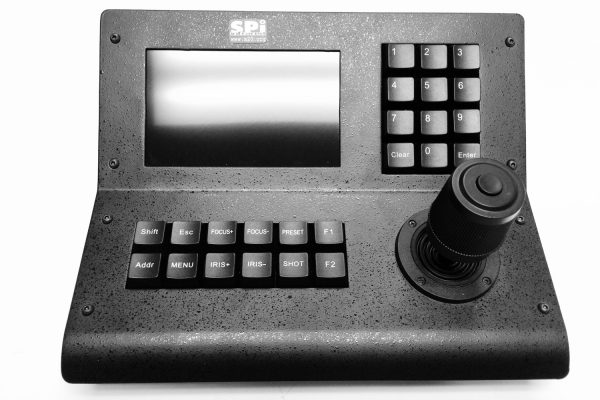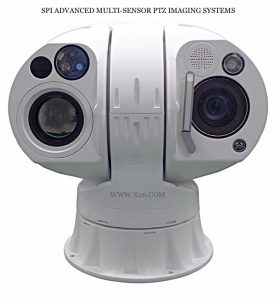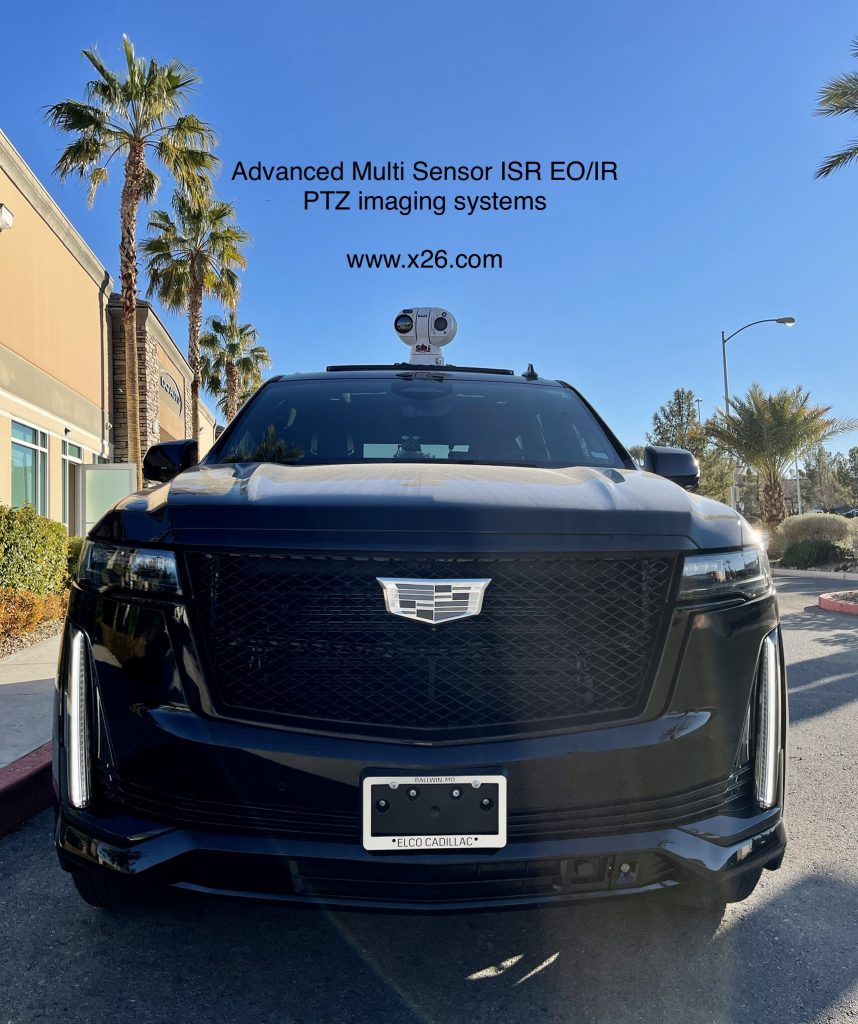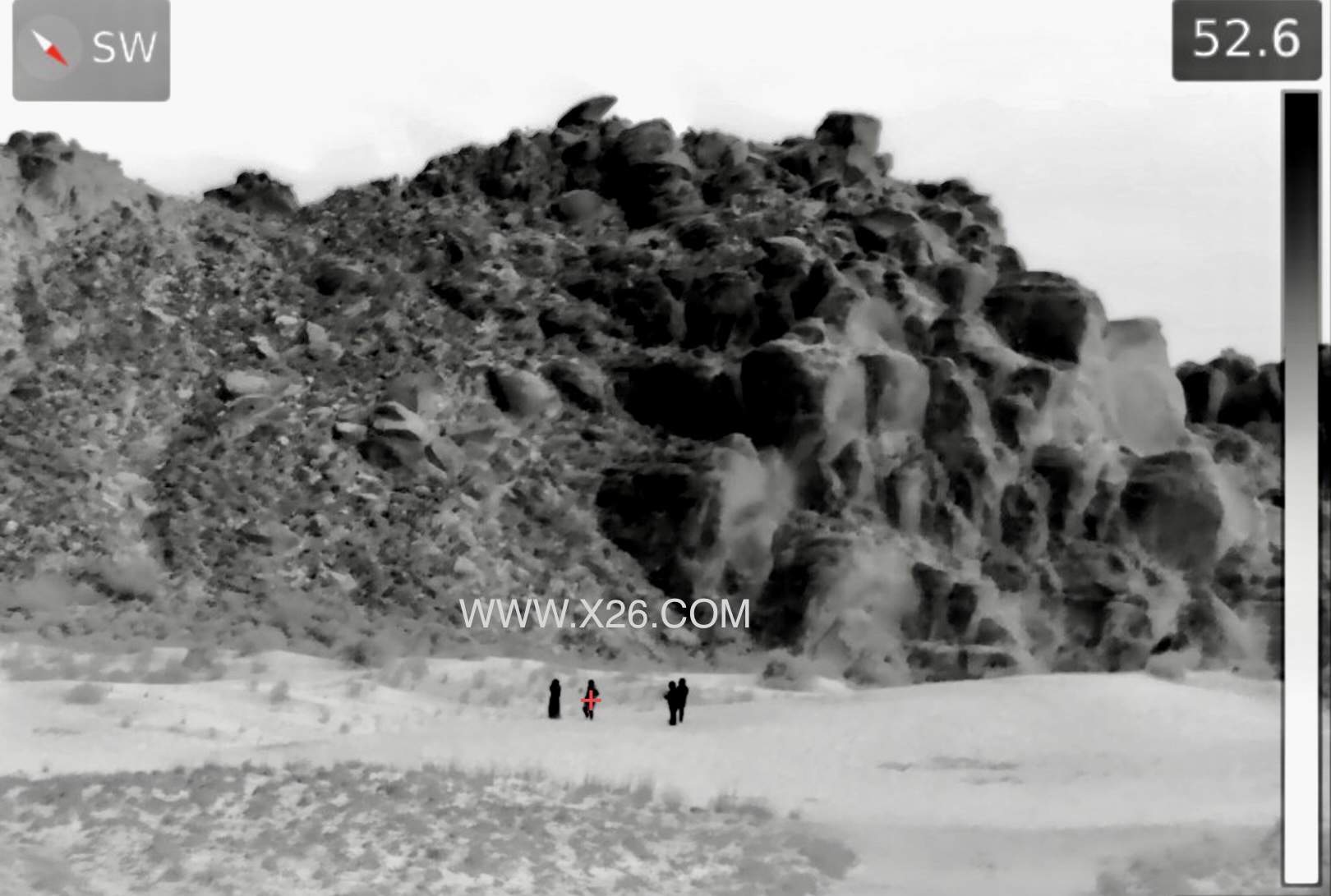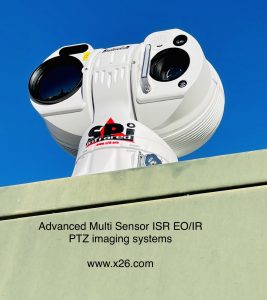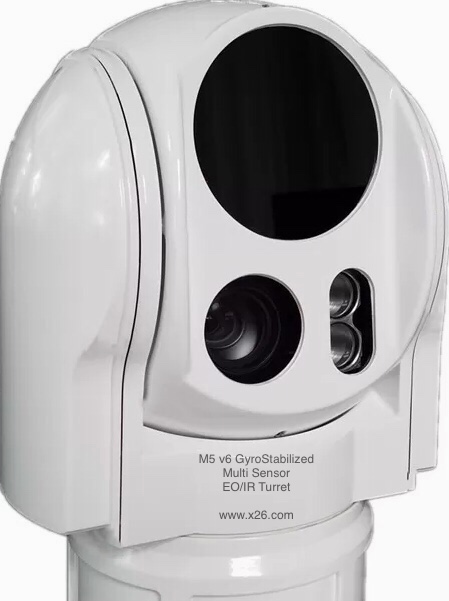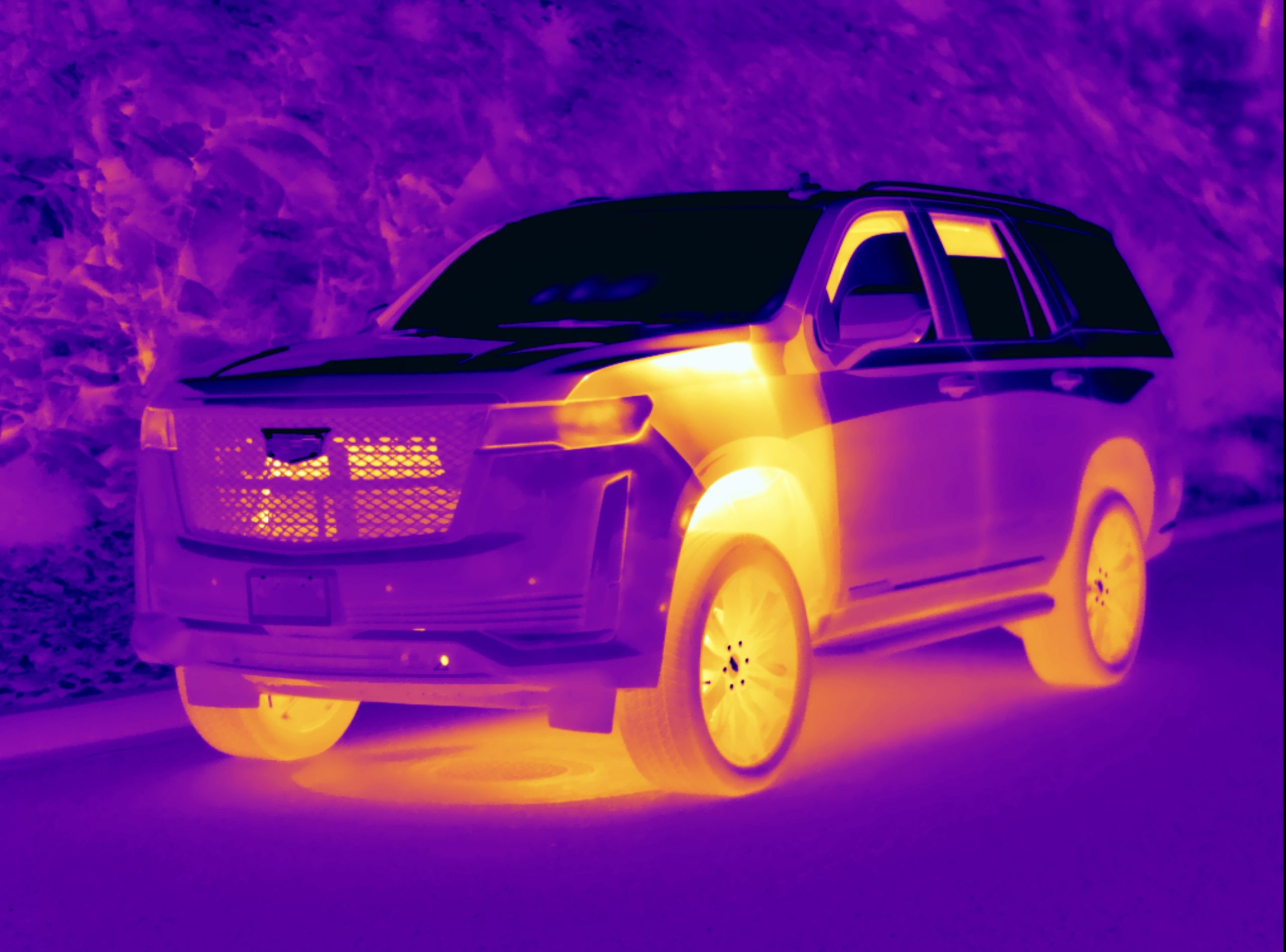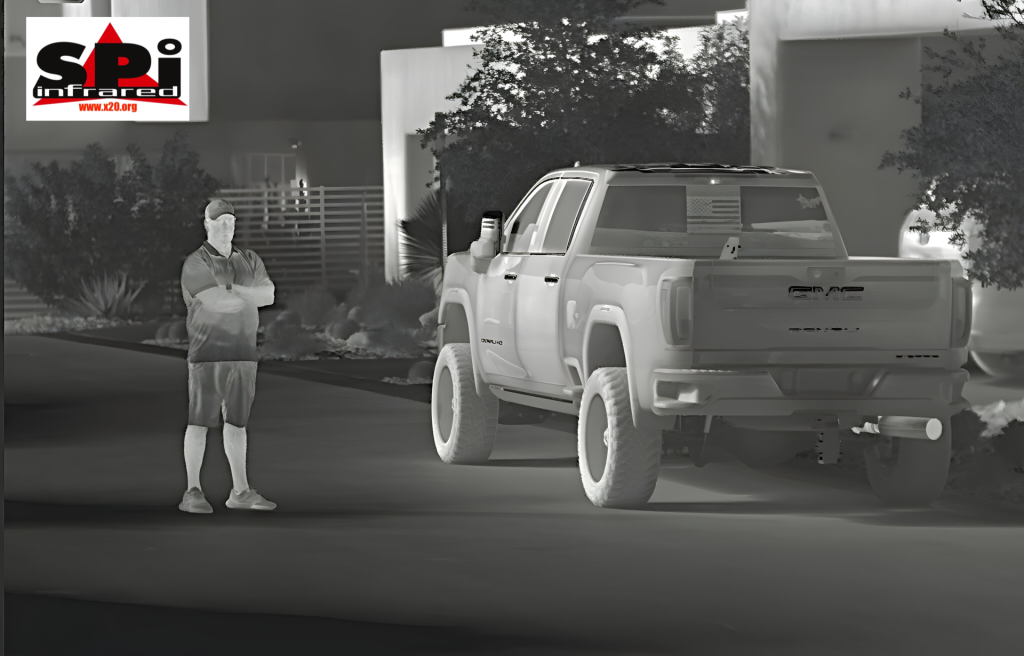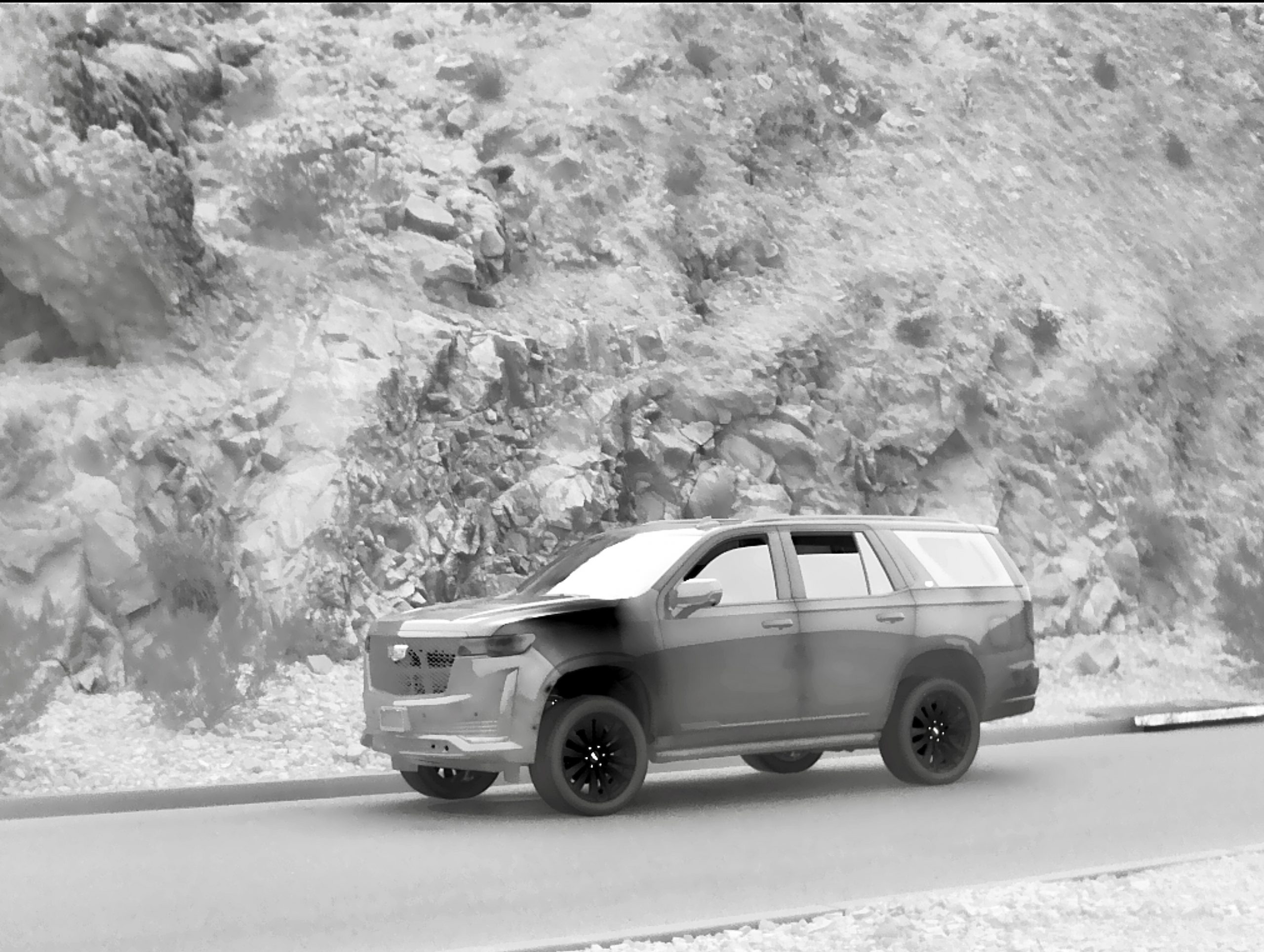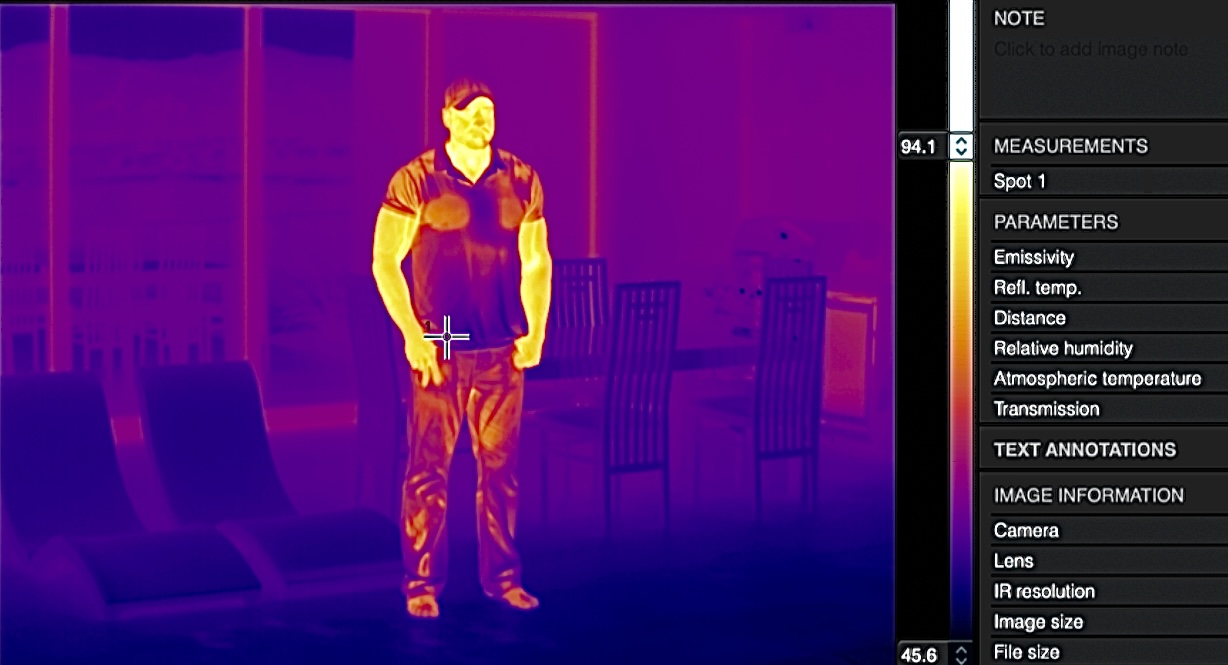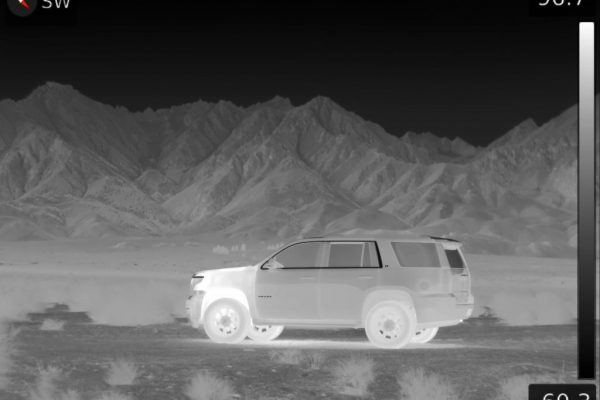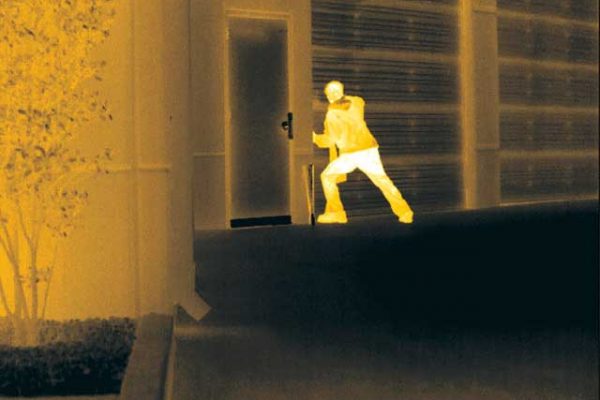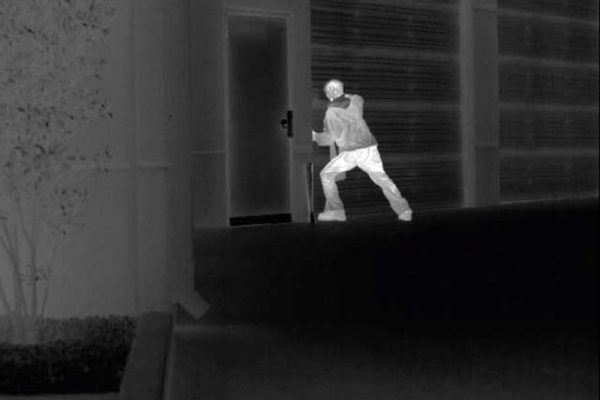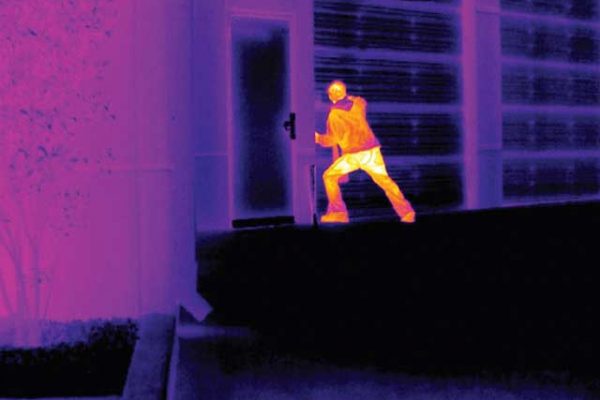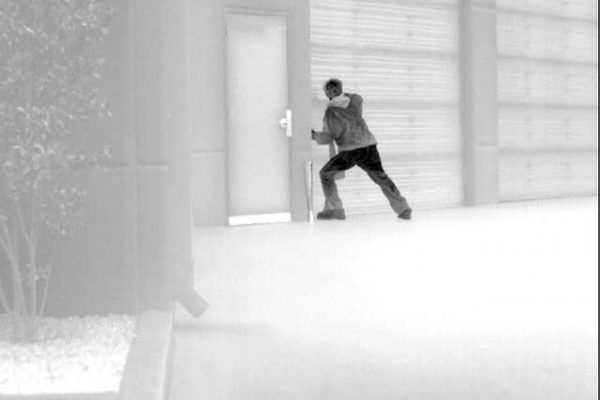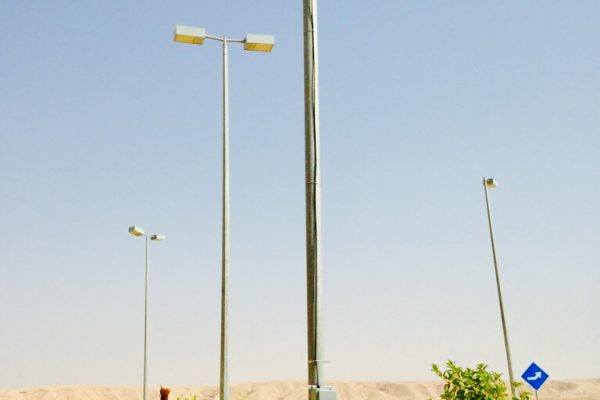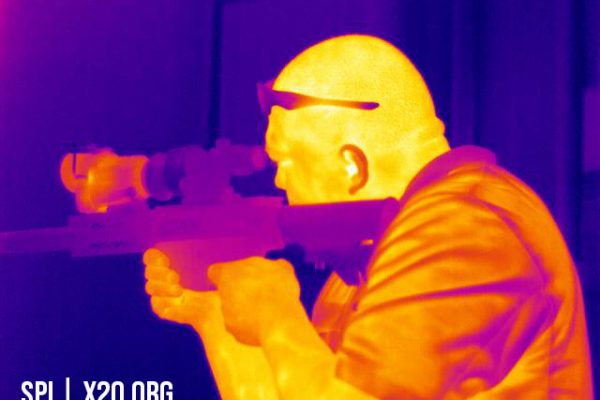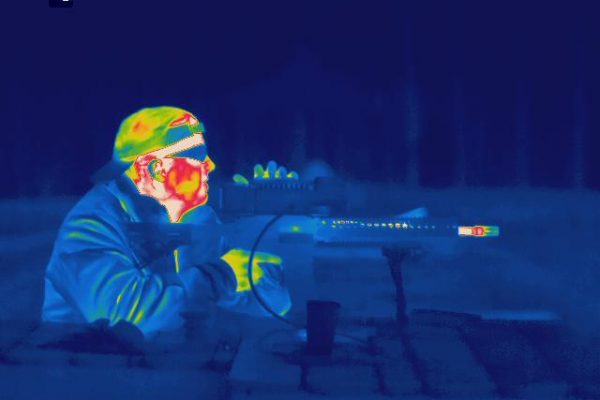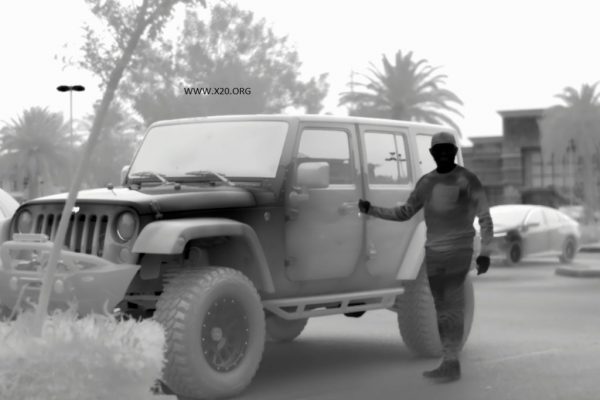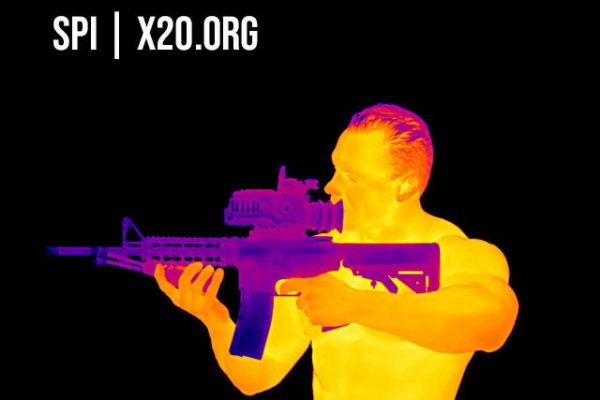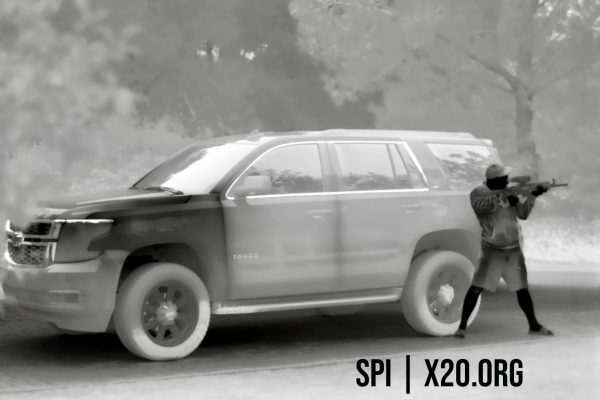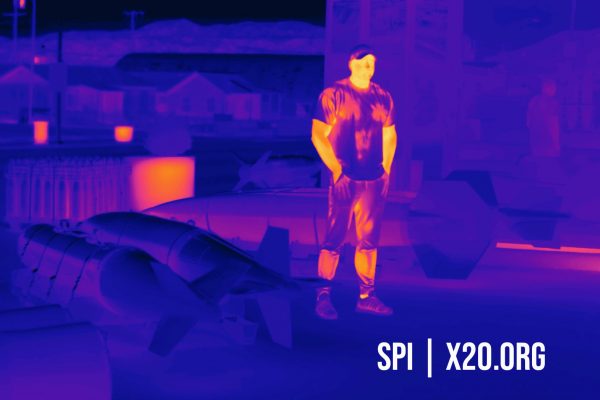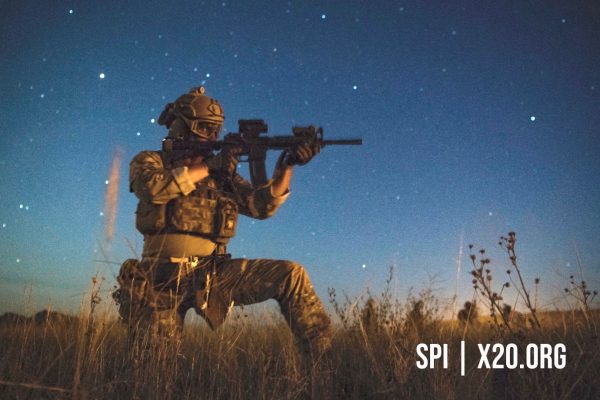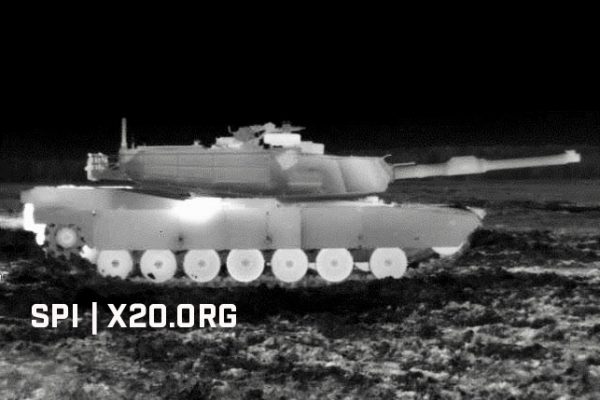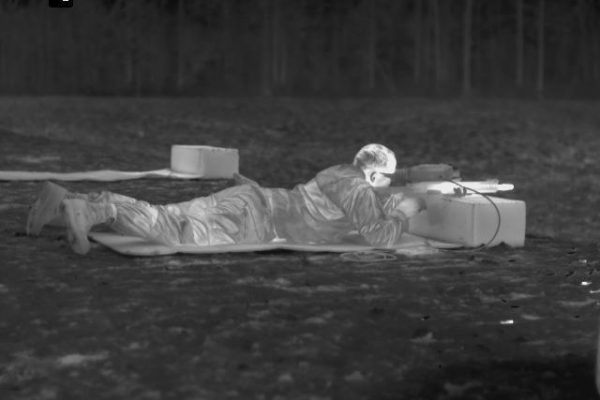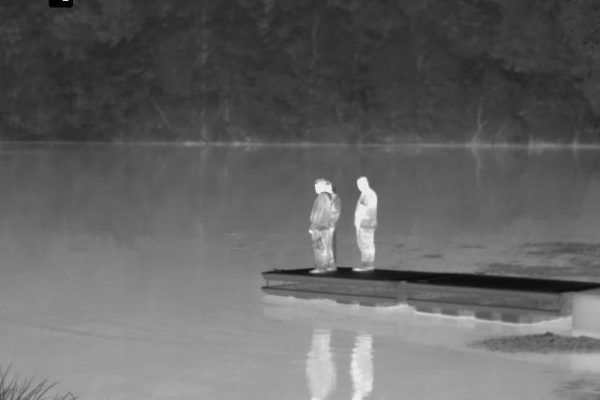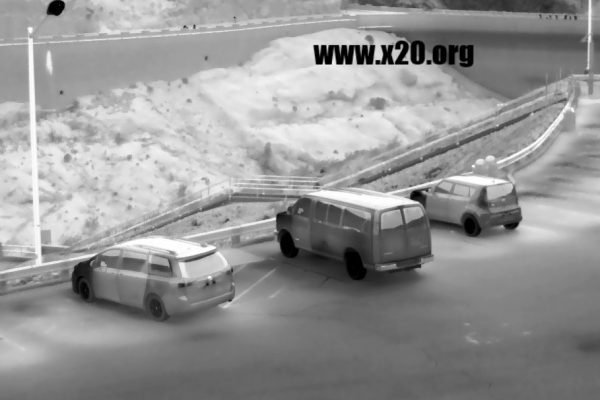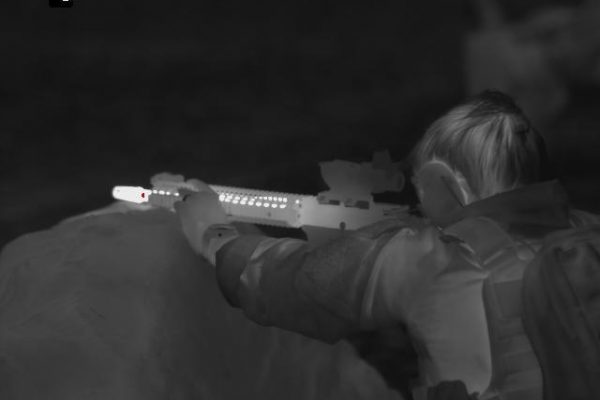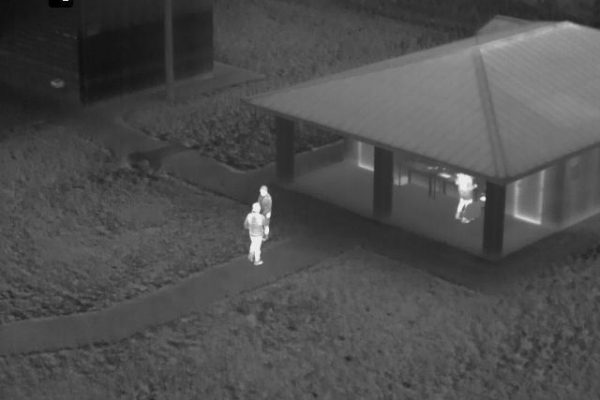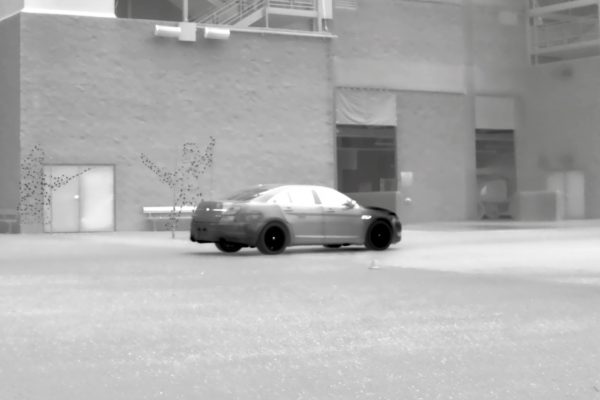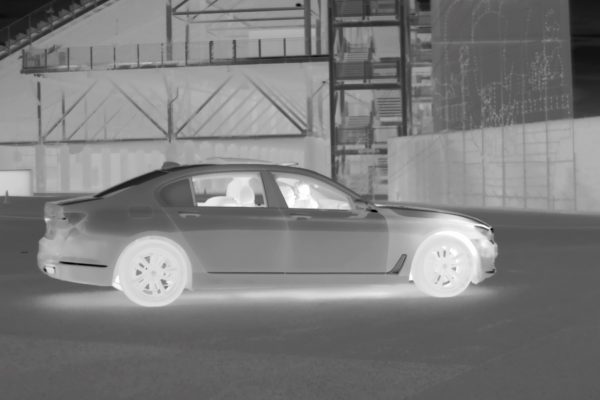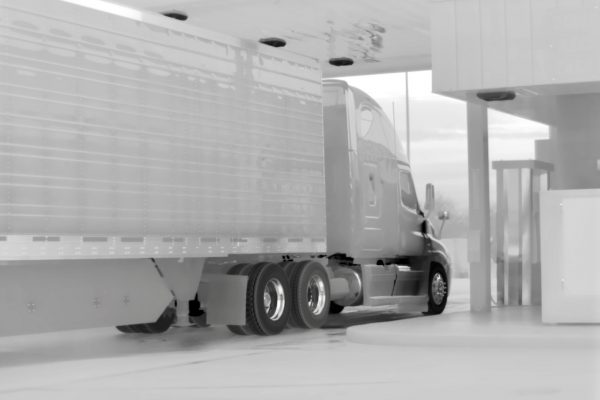With Long range PTZ or pan / tilt / zoom thermal imaging becoming relatively cheaper and an integral part of Short, medium, long and extreme ultra long range Surveillance, security, observation systems, a whole range of uses becomes both possible and economically viable. long range Thermal flir PTZ cameras can be an excellent complement in many situations where conventional cameras diminish their performance as low light levels are present. They are, of course, unparalleled in a situation of twilight, thermal cross-over, near darkness and total darkness. They can also be an option in areas that are very difficult to illuminate effectively, for example a sea front, a harbor, or any other vast expanse of open water thus making SPI’s long range PTZ thermal infrared imaging Ir cameras paramount for use in marine, boat, vessel and ship applications. Similarly, artificial light not only runs the risk of revealing where the cameras are placed, enabling parties to avoid or vandalize them, but can also create projected shadows in which an intruder can avoid detection. Furthermore, spotlights can blind as well as illuminate. So cameras that do not rely on light can be the preferred solution in many different traffic situations, whether it is in railway tunnels, on air strips, runways, or on regular streets. Long Range Thermal flir PTZ cameras, on the other hand, cannot be blinded by bright lights or laser beams.SPI Corp’s long range multi sensor Eoir flir thermal imaging camera systems offer substantial long distance detection ranges allowing the operator to be positioned at very far distant standoff locations offering ample time to react, to threats or targets of interest. Long range imaging systems provide a benefit to the user when coupled with an array of sensors and geo locating modules especially in specialty military, security and surveillance applications. The farther you are, the more time you have to react and not be seen.What the science behind a long range thermal imaging FLIR IR night vision PTZ pan tilt gimbal turret camera?(a) Housing – Usually composed of an aluminum bell shaped cover, The housing can be of all shapes and sizes from plastic to military grade hardened coated all weather NBC Nuclear Biological Chemical compliant
(b) Camera module
This is where the image FLIR, MWIR, LWIR, SWIR, night vision, intensified, cmos, long wave, short wave, mid wave cooled and uncooled detector and sensors reside, CCD sensor, optical zoom germanium DFOV, TFOV, Fixed and CZ continuous zoom lenses, and the motors that control Zoom and Focus are located.
(c) PTZ Pan Tilt control board
The PTZ control board processes RS485 data that converts it into mechanical movements. Some are Pelco, Pelco Extended and are available in a wide array of protocols supporting VMS, GUI, ONVIF, IP, ETHERNET, FIBER, MICROWAVE, ANALOG, DIGITAL and WIRELESS
(d) PTZ motors – are the small motors that allow the thermal FLIR and CCTV HD camera to perform up, down, left and right functions. Marked by the arrows are two step motors; the one to the top controls up and down movements and the one at the bottom controls left and right movements, some systems have no motors and other methods of moving the cameras PTZ, some use brushless motors.We can Customize your long range Pan Tilt Zoom Thermal, CCTV and other exotic sensor system to cater to your exact application,
We have facilities that can satisfy any requirement in a rapid response timeframe. We offer the worlds longest range, best weapons grade all weather IP68 hardened PTZ EOIR
imaging systems. Contact us for additional information and pricing or call 702-499-9551Long Range Visible HD CCTV cameras can compliment the Thermal cameras and assist in daytime and low light DRI (Detection, Recognition and Identification)Long range Critical infrastructure applications require not only continuous video surveillance and monitoring, but also a solution that yields highly reliable intrusion detection, with fewer false alarms. This need makes advanced video analytics a must for any adequate long range thermal/cctv surveillance system.Advanced analytics will provide multiple automated alarm notification options, including email, edge image storage, digital outputs or video management software (VMS) alarms. Incorporating high quality, unique and adaptive analytics can virtually eliminate false alarms, allowing security personnel to respond more efficiently and effectively, while also lowering overall cost for the end user.While traditional long range surveillance & security technologies such as radar, thermal flir imaging and visible cameras, or video analytics work well on their own, utilizing all of these options together provide an advanced perimeter detection system. For example, ground surveillance radar can detect possible threats beyond the fence line as they approach and send a signal to pan-tilt-zoom (PTZ) cameras, triggering them to slew to a specific location. From there, embedded analytics and visible cameras can further identify objects, notify authorized staff, and collect additional evidence through facial recognition or high-quality photos.Once a long range intrusion attempt is discovered, it is important to act fast. Organizing a response system that can initiate actions based on GPS location data, such as the slewing of FLIR PTZ cameras, automated intruder tracking or activated lighting sensors, greatly increases staff’s situational awareness while easing their workload. For instance, thermal imagers deployed in conjunction with video analytics can be used to generate an initial alarm event, which can then trigger a sequence of other security equipment and notifications for personnel to eventually respond to. Having all of this in place essentially lays the entire situation out in a way that allows responders to accurately understand and evaluate a scene.After the designated auto-response mechanisms have activated and done their job, it is time for responders to acknowledge and assess the situation. From here, authorized personnel can take the next appropriate step toward defending against and delaying the threat. Deterring suspicious activity can be achieved through real-time two-way audio, a simple but powerful tool. Often, control room operators can diffuse a situation by speaking over an intercom, telling the trespasser that they are being watched and that the authorities have been notified.The primary purpose of the delay facet of the overall perimeter protection strategy is to stall an attempted intrusion long enough for responders to act. Access control systems play a key role in realizing this objective. When a security officer sees a non-compliant, suspicious individual on the camera feed, the officer can lock all possible exits to trap them in one area all through the VMS.
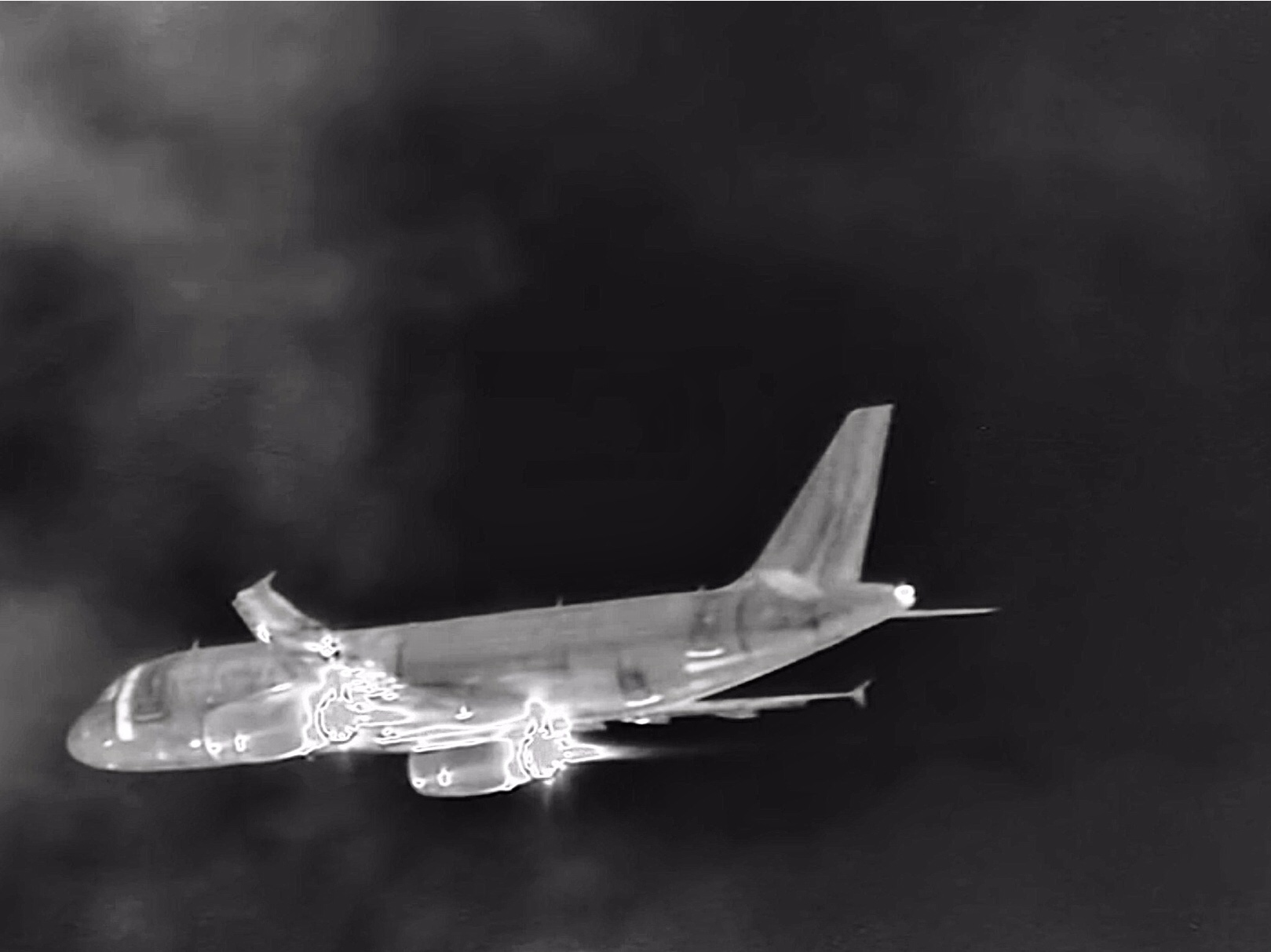
Protecting a country’s borders is vital to its national security. No matter what hour of the day, the job is an enormous undertaking that becomes even more challenging under the cover of darkness.
Long Range PTZ (Pan Tilt Zoom) FLIR Infrared (IR) thermal imaging cameras provide another set of eyes for border control professionals and help them meet the demands they face at night and in other low-light situations. IR cameras detect the invisible infrared energy that all people and objects emit, and can “see” better than the naked eye at night and in bad weather. Whether searching for a fugitive or performing a special surveillance operation or routine patrol, darkness can be the greatest obstacle to border control professionals. Long Range PTZ FLIR Infrared thermal imaging cameras equip border control personnel with a whole new way of looking at the world. In simplest terms, thermal imagers operate like the human eye, but they are much more powerful. Energy from the environment comes through a lens and is registered on a detector.
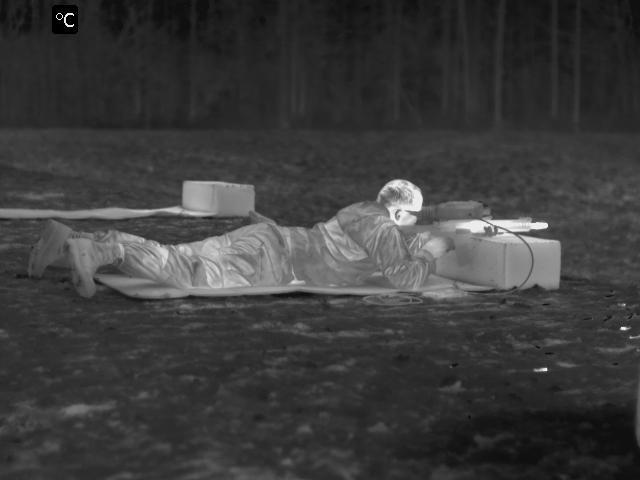
By measuring very small relative temperature differences, invisible heat patterns are converted by the thermal imager into clear, visible images that the human eye can see through a viewfinder or TV monitor.All objects that are not at absolute zero temperature (0 degrees K or -459.67 degrees F) emit various types of electromagnetic radiation including infrared. The hotter an object gets, the more infrared radiation is emitted as a result of the thermal agitation of its molecules and atoms. The spectral distribution or wavelength of this energy depends on the nature of object (i.e. its relative effectiveness as a radiator, called emissivity) and upon its temperature. Blacker colors and duller surfaces usually have a higher emissivity and radiate infrared energy more effectively. Lighter colors and shinier surfaces radiate less effectively. Because the energy being sensed is heat and not light, Long Range thermal imagers can be used in both daytime and nighttime operations to find people, avoid obstacles or detect fire hot spots. Due to their own levels of infrared heat energy, people are easily seen 24 hours a day. Thermal imagers are usually very sensitive and can detect temperature variations as small as 0.1 degrees centigrade, even in less than ideal environmental conditions. Since they are unaffected by the amount of light in a scene, they won’t “bloom” or shut down in direct light.
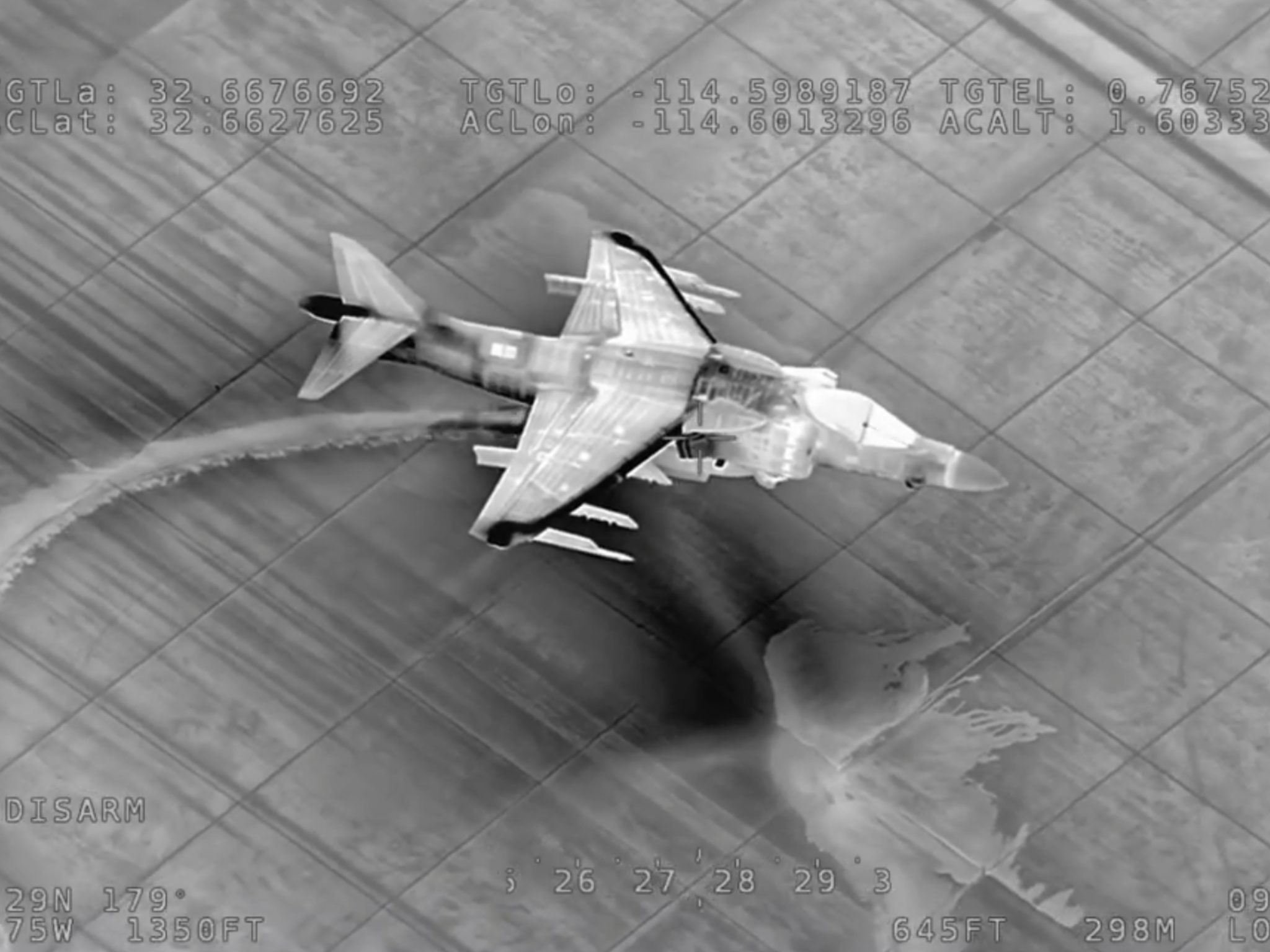
PTZ thermal imaging flir camera
Protecting a country’s frontier, border and coastline is vital to its Homeland Security and protection. It can be very challenging to detect potential intruders or smugglers in total darkness or in diverse weather conditions. Thermal imaging cameras can help border surveillance and security agents to meet the demands they face at night and in other low-light situations. PTZ Thermal imaging FLIR cameras that are specifically designed for border patrol, protection, security and surveillance can be integrated in a border security project with radars and other sensors in a so called “slew-to-cue”, detect, recognize and identify modes. Border Protection systems need to scan wide areas and then zoom in to extreme long ranges and identify targets in real time, assessing whether the intruders are illegal immigrants or refugees, smugglers, terrorists or enemy forces. Securing borders requires round-the-clock, all weather, long distance, all terrain integrated border surveillance systems. SPI thermal imaging night vision IR camera systems are a complete border security solution that can be mounted and operated on Border Wall (southern and northern), Border Fence, masts, vehicles, tripods, buildings & virtually anywhere
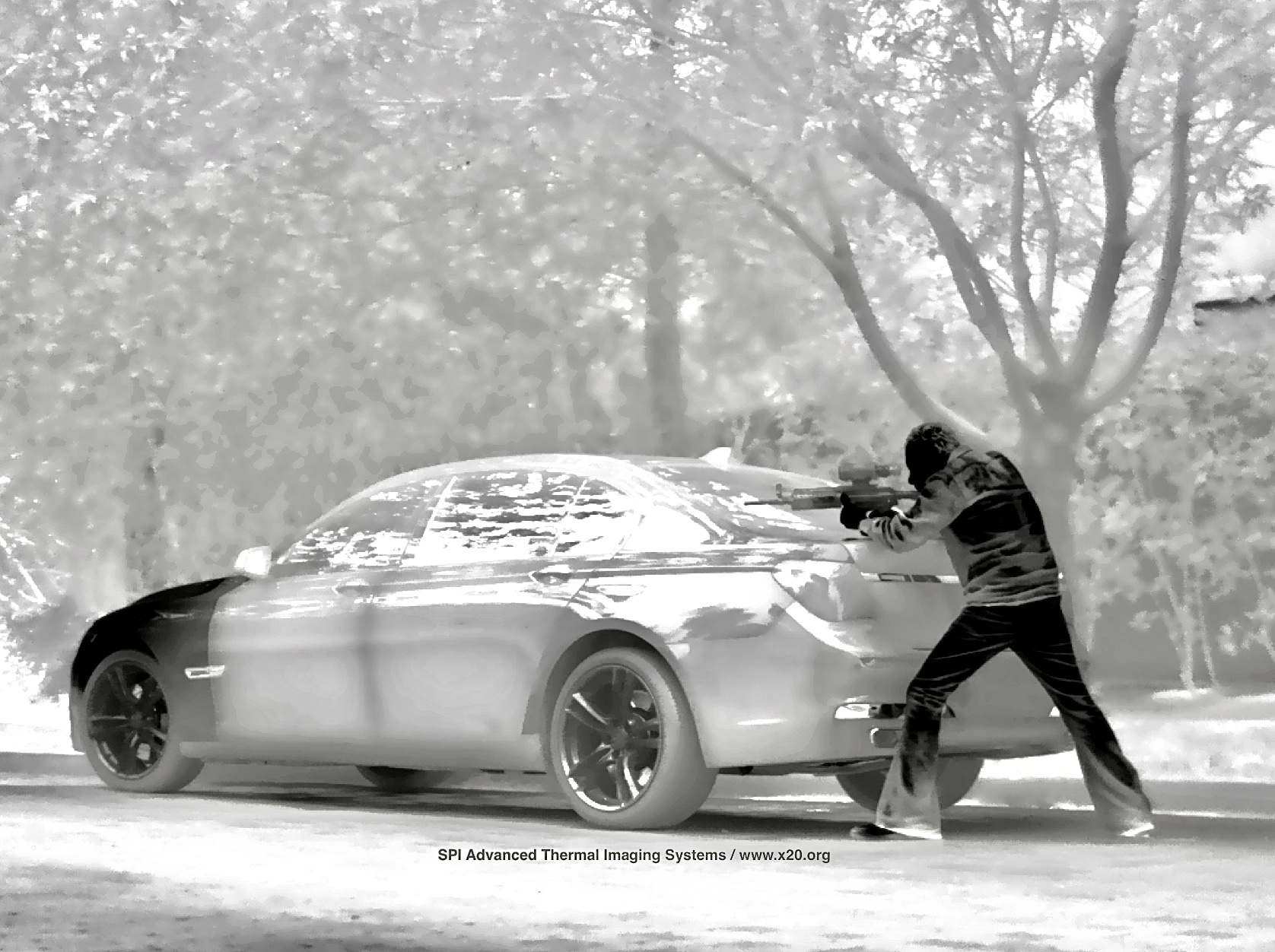
Border patrol security, surveillance & Defense Thermal imaging pan tilt and fixed cameras are widely used for Homeland Security. Thanks to their ability to detect human-sized targets several kilometers away, they are extremely suited for border as they create an invisible fence. SPI Family of long range border security thermal imaging cameras can detect human-sized targets at a distances exceeding 25 kilometers. Not only land borders need to be protected. Thermal imaging cameras are the perfect tools for coastal surveillance as well. Small vessels can be detected at extremely long ranges.
SPI has a broad experience with Homeland Security projects and markets a wide variety of thermal imaging cameras for this application. Multi-Sensor Systems are also available. We work with you our customer to design the perfect thermal imaging solution but the camera is a part of the package, the entire network is established for local or remote observation and controlling of the systems. SPI Works with end users, integrators and consultants to meet mission requirements. The Reliability of the gimbal endlong with the entire system have to be able to withstand extreme weather and harsh environments, our ptz gimbal platforms are the absolute most ruggedized and reliable systems available today with 100% duty cycle, weapons grade shock resistant stabilizers and nitrogen purging.
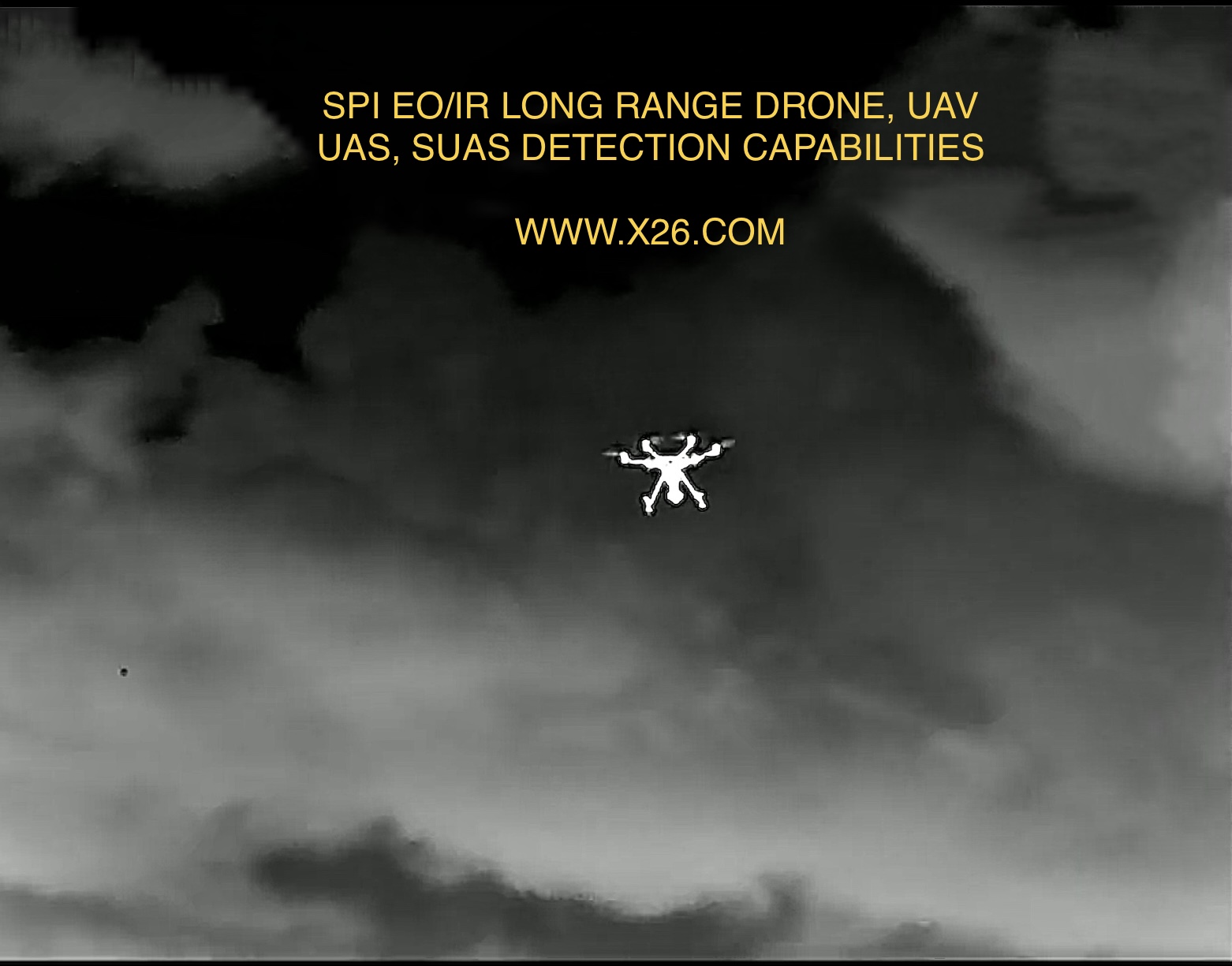
Long range thermal imaging eoir drone uav uas suas detection countermeasures IR
Our long range flir PTZ thermal cameras are robust, All weather, heavy duty PTZ (Pan Tilt Zoom) positioners/Gimbals that rotate continuously 360 degrees and Pan/Tilt up and down allowing the user to guide and control the motors and position the long range flir cameras and associated sensors to the position of interest. The long range flir PTZ thermal Security cameras can be gyro-stabilized which reduces the shake and jitter from the imagery especially when zoomed in to maximum telephoto ranges. Our long range flir PTZ thermal Security cameras Have the ability of reaching out and detecting threats up to 50 kilometers. All of our flir PTZ thermal camera come with a complimentary long range zoom daytime EO CMOS low light camera Which make these systems a true complete day and night imaging system. Additional sensors can be added onto our long range flir PTZ thermal cameras such as SWIR (Short Wave Infrared) cameras, Laser rangefinders (LRF), tracking, radar with slew to cue capabilities, GPS, Compass, Laser dazzlers, microphones, spotlights, loudspeakers, laser infrared Illuminators, laser infrared pointers, and high speed cameras. We custom build our long range flir PTZ thermal camera and can incorporate most any add on option you can imagine into our gimbal platforms. Our thermal cameras offer the user crisp, clear image quality with outstanding detail, clarity and fidelity. Long range infrared cameras come in both Cooled MWIR and LWIR uncooled flavors in both HD (High Definition) and SD VGA (Standard definition) which is typically 640×480 or 640×512 Pixel resolution. Our long range thermal imaging flir camera systems are mounted in harsh environments and used for Border patrol and protection, coastline and shoreline installations, range, airports, forward Operation and observation bases (FOB), runways, critical infrastructures, high value asset protection and anywhere where long range 24/7 day and night vision imaging is critical to secure and protect a specific area. Our long range flir PTZ thermal cameras are easily mounted in multiple configurations like on roof mounted, car, Truck, mobile command vehicles, security vehicle and mobile applications. In marine vessels, our long range flir ptz thermal cameras Are mounted to boats, yachts and cruise ships. Other mounting provisions are portable trailers, telescoping masts, poles, tripods, pendant, buildings and fixed mounts. SPI uses the best, most reliable and longest lasting coolers in the midwave MWIR long range thermal camera systems which is a critical factor in the procurement of long range flir cameras. Having a reliable cooler ensures years of continuous maintenance free operation from the MWIR camera. We source the best Cooled Camera system made up of indium antimonide InSb, HOT MCT Mercury Cadmium Telluride and SLS types with micro pitches as small as 10 µm.
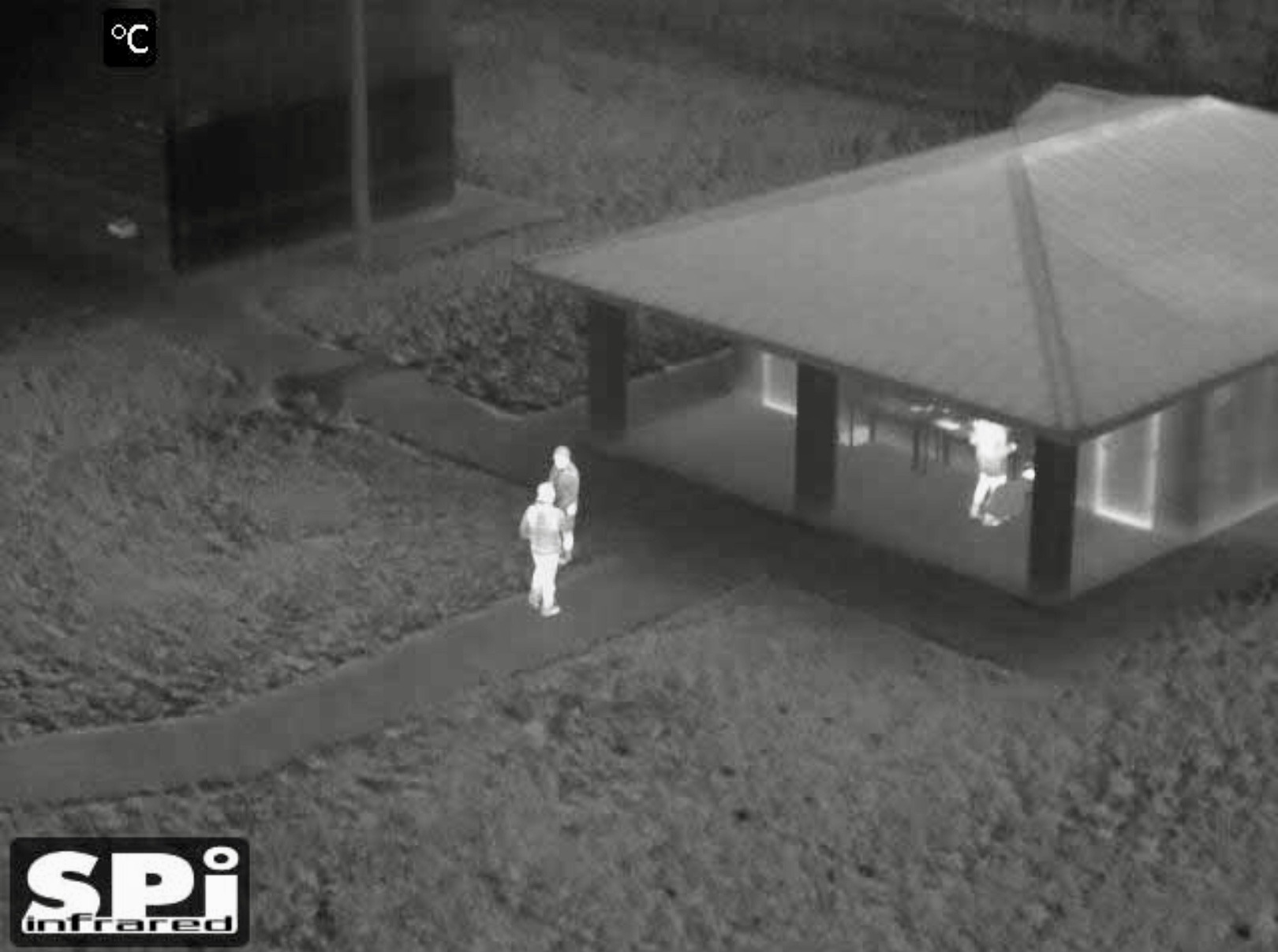
Controlling movement across national borders presents numerous political, economic and technical challenges. While primary responsibility for Long Range FLIR thermal imaging/CCTV EOIR PTZ border control rests with the US Department of Homeland Security (DHS) and Public Safety and Emergency Preparedness Canada (PSEPC), the respective defense departments have both key roles and significant materiel resources with which to support national security objectives. Given the size and in many cases remoteness of North American borders, technical solutions for long range PTZ FLIR thermal imaging/HD CCTV Sensors and pan tilt zoom extreme distance gimbals are necessary to act as multipliers to limited manpower within government enforcement agencies. The FLIR thermal imaging night vision and HD TV Visible PTZ GIMBALS AND TURRET products and technologies to tackle this effort reside not only in the private sector, but in capabilities either under development or already in use by the military. Civil agencies can benefit from leveraging these capabilities if hurdles such as cost, training, interoperability and security can be overcome.The Department of Homeland Security (DHS) is implementing several initiatives toward securing the border, including the Secure Border Initiative (SBI) and the Western Hemisphere Travel Initiative (WHTI). SBI takes a systematic approach to border security by integrating and unifying border security systems, and developing and coordinating programs and policies to secure the border and efficiently enforce customs and immigration laws. The goal of WHTI is to strengthen border security and facilitate entry into the United States for U.S. citizens and legitimate foreign visitors.The potential for danger at borders all over the world is a very real concern as of late with regard to the high risk of terrorism and drug/human trafficking. In areas such as the Southern US border there has been a sharp increase in the number of armed drug and immigrant smugglers that require heightened levels of surveillance. Actionable intelligence needs to be provided to patrols in the field. But technologies providing information to the Border Patrol personnel need to address a very specific set of challenges: Long Range FLIR Thermal imaging Pan Tilt Zoom PTZ Surveillance equipment must be able to endure consistent exposure to harsh environments in remote locations. In addition, Detection and Tracking technologies have to face highly cluttered environments, at times filled with tumbleweeds and a wide range of animals, the geography itself can also present its own intricacies as line of sight is not always available as rugged hills can be part of the landscape’s fabric. Challenges specific to border surveillance include: Wide-area perimeter surveillance of at times rural and mountainous regions with wildlife clutter Survey and automatic detection of a wide range of different threats, including hardly detectable ones such as: UAVs, RHIBs, crawlers, swimmers etc. Equipment must be able to withstand harsh environments in remote locations Provide actionable, real-time intelligence to allow for immediate action by patrols in the field Long Range FKIR OPTZ Pan Tilt Zoom thermal imaging cameras and radar BORDER SURVEILLANCE/SECURITY PLATFORMS Securing national borders has become increasingly difficult. Global deployments call for a wide range of mission capabilities requiring flexible, high-performance multi-sensor systems, installed and operated from a variety of platforms. The most effective intrusion detection systems use multiple technologies to increase the probability of early detection with low false alarm rates under a range of atmospheric and lighting conditions. Closed circuit television (CCTV), infrared image cameras, surveillance UAVs, long range radar and laser radar (LIDAR) are often deployed in appropriate combinations. Short, medium, long and ultra long range FLIR Thermal imaging camera platforms integrate a wide variety of sensors – including such systems as tautwire perimeter detection, vibration intrusion detection, electromagnetic intrusion detection, electrostatic field disturbance, electro-optical observation, and even microwave field disturbance detectors. • Perimeter fences – deploy a variety of electronic surveillance technologies for intrusion detection and warning. These ground-based systems are primarily short-range, up to around 500 meters. • Observation towers extend Long Range FLIR Thermal Imager camera surveillance capabilities many tens of kilometers further from a border installation, and provide a platform for ground-based medium-range surveillance. • Mobile surface observation platforms, such as land vehicles as well as maritime vessels, patrol frontier regions and coastal waters, extending the reach of medium-range / and long range Mobile Surveillance system sensors. • Thermal imaging EOIR FLIR Observation aerostats, stationary platforms, generally tethered PTZ FLIR THERMAL IMAGING balloons, allow for extended day/night vision EO/IR ISR observation over wider areas, extending the reach of long range Thermal FLIR Imaging surveillance sensors beyond what can be seen from an observation tower. Gyro Stabilizing the platform is recommended for extreme long ranges in order. To obtain high resolution images from the sensors.
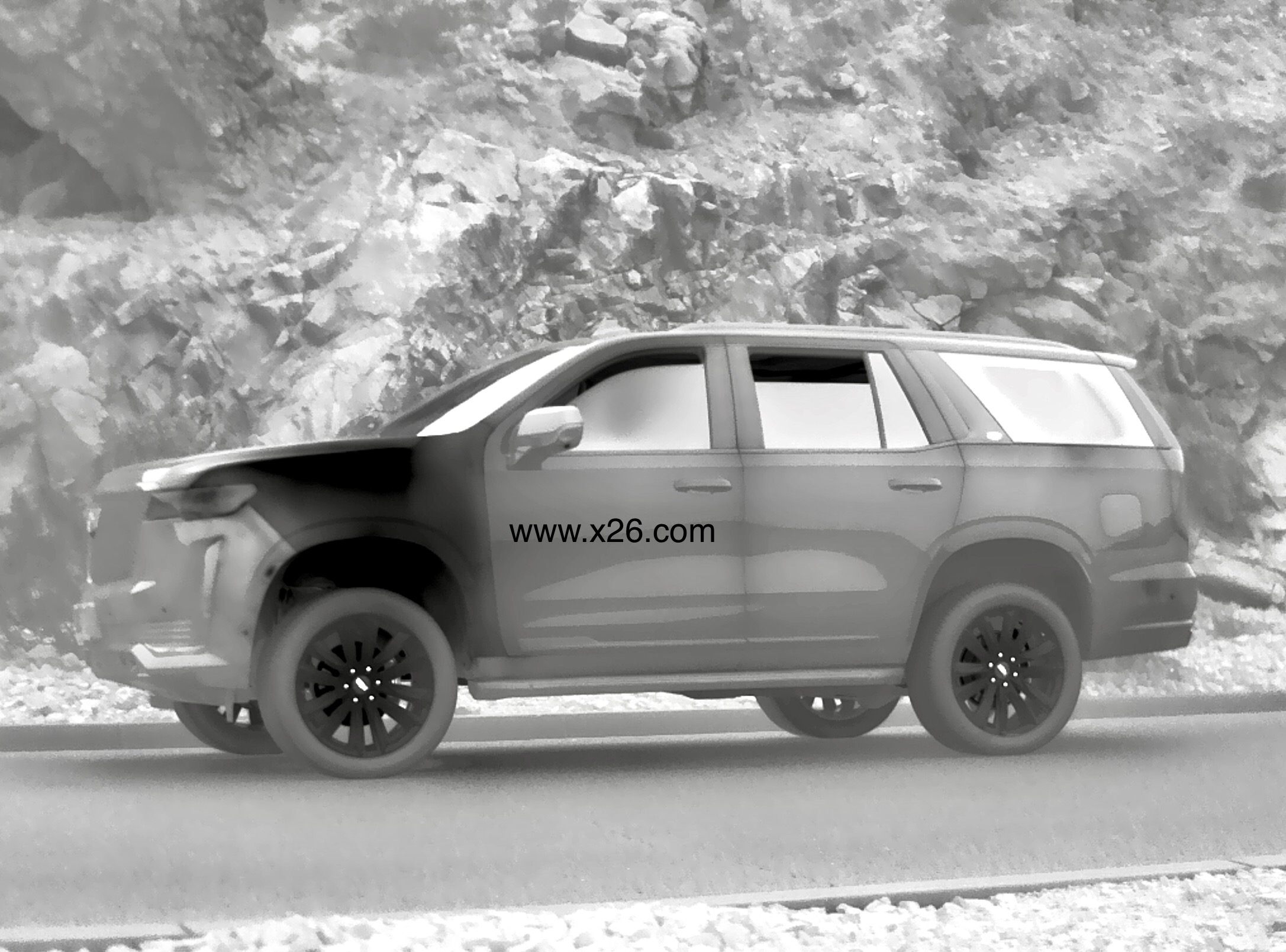
Because everything generates heat, thermal imaging cameras can see as well at night as they can during the day. Cameras dependent on visible light are useless at night or in poor visibility without supplementary illumination from lamps, LEDs or lasers.
See clearly also in broad daylight and in total darkness night vision
SPI’s long range IR FLIR PTZ pan tilt thermal imaging cameras will not only protect borders and assets against intruders during the darkest of nights. The cameras are also perfectly suited for daytime surveillance. The long range infrared cooled and uncooled FLIR thermal imaging cameras will detect objects that remain invisible to the naked eye. For example, people hiding in the shadows or in the bushes will be detected. The cameras are also not blinded by glare from the sun.
Force Protection, Border Security and Surveillance The Ultra extreme NFOV long range FLIR thermal imaging night vision PTZ surveillance systems cover more territory and enable detection and classification better than any other sensor suite available. Networkable video and control make the long range FLIR thermal imaging systems the perfect border security imaging solution. The systems can be connected to a radar in a so called “slew to cue” configuration. If the radar detects an object, the camera turns in the correct direction so that you get a visual image from that blip on your radar screen.
Coastal Surveillance Some countries are bordered by thousands of kilometers of coastline. The long range ptz pan tilt zoom FLIR thermal imaging systems are the perfect tools to monitor what is happening along the coastline. They can be used to intercept illegal immigrants or to detect other threats coming from the sea. They are perfect for Vessel Traffic Monitoring and can work together with Automatic Identification Systems (AIS) and radars.
Perimeter Security Airports, air force bases, hydroelectric power plants, refineries, oil and gas pipelines and any other large infrastructure objects have perimeters that can be kilometers long. The ultra extreme FLIR thermal imaging systems provide the ultimate security solution. Detection ranges can exceed 50 kilometers KM
Quick and accurate Pan & Tilt unit The ultra compact, ultra precision IP68+ Pan & Tilt unit is designed for heavy duty service in extremely demanding environments, from hot desert to arctic conditions. This positioning unit includes slip-ring connections for the different signals (video, power and data), which allow for infinite horizontal rotation, and provide DC servo drives for the rotary movement in both axes. High precision gears provide fast accurate movement, free from backlash and extremely low hysteresis, through a continuous 360° rotation. The performance contributes to find targets faster, as well as to get a good and stable display of the sensors’ pictures even in very narrow fields of view. Incremental encoders allow for accurate geo-referencing of targets with precise read-out of the vertical and horizontal angles. Our PTZ pan tilt gimbals are the longest lasting most reliable positioning gimbals available. Enhanced electronic and active gyro stabilization ensures jitter free imagery at extreme long ranges and while operating the system on the move on mobile/windy harsh mast/pole/tripod hydraulic and retractable platforms.
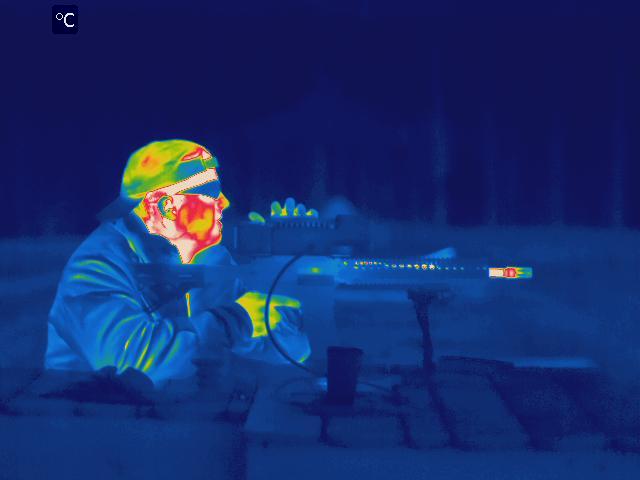
Laser Range Finders LRF, SPI’s ultra extreme long range panoramic day/night vision MWIR panoramic thermal IR imaging midwave cooled cameras and long-wave LWIR uncooled panoramic thermal imaging systems can be equipped with long range eye safe Laser Range Finder. Combined with the GPS system and the electromagnetic compass, it will allow you to exactly determine where a suspected object is located and how far it is away even at extreme standoff long ranges.
Easy to install learn and operate, Our long range thermal IR infrared imaging PTZ pan tilt gimbal systems are designed to be easily installed and operated from remote or local C2.
Unlike optical systems, which like the human eye requires light, long range thermal infrared flir imaging uses infrared electromagnetic radiation from the 3,000–14,000nm wavelengths or 3-14 microns (heat) to produce clean, crisp monochrome images even in complete darkness. Thermal cameras are extremely effective as humans, animals, and vehicles are all typically hot in contrast to their surroundings making them easily detectable by Lwir and Mwir ultra-sensitive thermal Ir cameras. This allows Cooled and uncooled thermal cameras to detect threats at distances up to 35 kilometers, even in complete darkness and in harsh environments. Not only does thermal offer longer night vision ranges but it has advantages during the day as well. Standard visible CCTV/CCD cameras image is degraded by direct or reflected sunlight because they rely on contrast in order to identify targets of interest, In areas where contrast is poor optical cameras can be rendered useless and their performances change based on lighting conditions. Thermal imaging flir Ir camera technology, however, is completely immune to light allowing it to see in any lighting environment for 24/7 true day/night viewing.
All objects that are above absolute zero (-273°C) emit infrared radiation. The amount of radiation emitted is proportional to the temperature of the objects. Thermal imaging detects these minute temperature variations and accurately reproduces the scene in a variety of pallets, most often in black and white greyscale. Since all objects emit infrared radiation a thermal FLIR imager is able to “see” the environment regardless of lighting conditions. Thermal energy passes through many optical obscurants including smoke, dust, modest foliage and fog. SPI’s long range MWIR cooled and LWIR uncooled long range thermal cameras offer extreme continuous zoom thermal optical lenses that start off wide for a large area situational awareness coverage , making them perfect for 24/7 target detection and identification. SPI’s thermal cameras provide state-of-the-art protection and a dynamic and versatile solution ideal for a host of applications including, but not limited to, security and surveillance, marine navigation, perimeter security, border/frontier security, military/defense tactical imaging, coastal protection and homeland security.
Thermal imaging is a passive technology meaning that, unlike other night vision technologies, thermal does not artificially increase light or require any illumination or light source. This is extremely important as standard IR illumination emits a faint red glow which can allow intruders to find possible blind spots in your surveillance system. There are many applications that require stealth, such as SWAT teams, investigation units, counter surveillance and military personnel who require their presence to be undetected in order to achieve their objective. long range Thermal IR is the best technology for these applications as it is a completely passive technology allowing you to conduct covert reconnaissance day or night.
We are here to help assist you in selecting the absolute highest quality, cost effective
day/night video security/surveillance system for your needs.
Additional Long range thermal cameras
are available at this LINK
Click here for the history and terminology related to thermal
infrared flir imaging and night vision equipment.
Long range thermal imaging flir PTZ camera resources
CALL (702) 499-9551 OR EMAIL US FOR
ADDITIONAL INFO AND DISCOUNTED PRICING


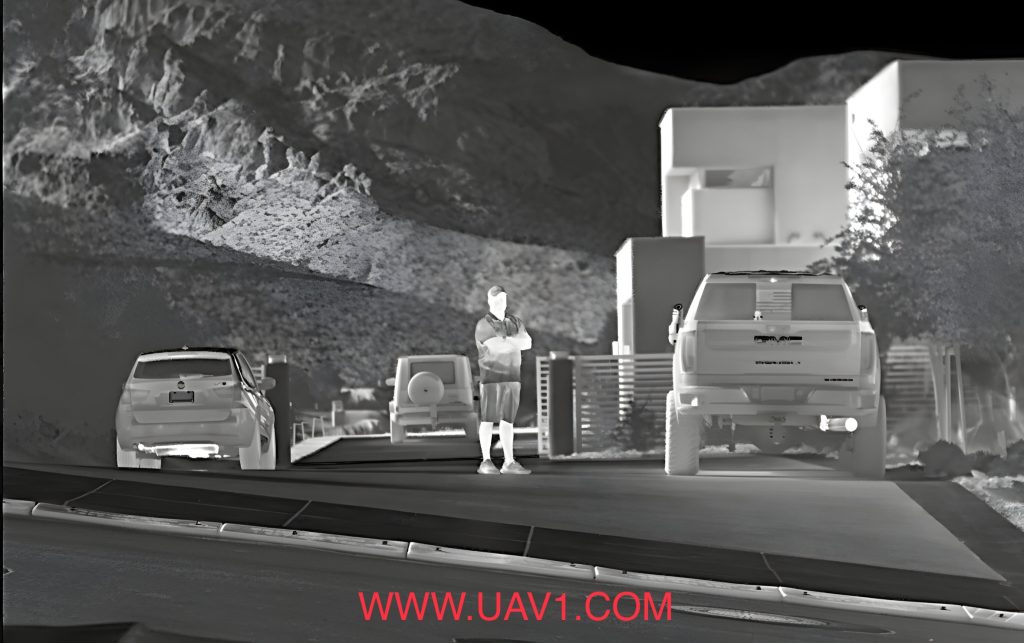
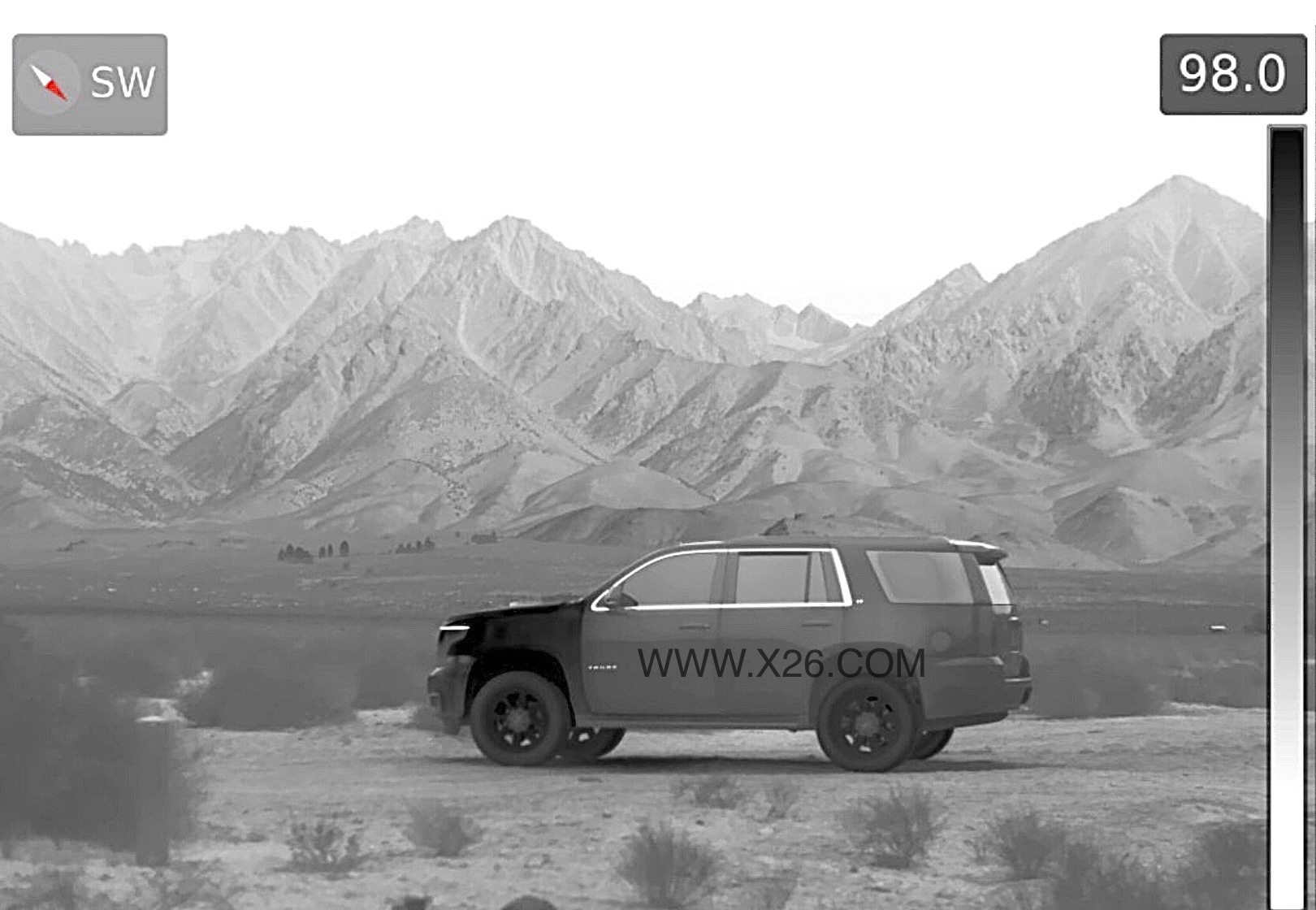 WE CAN CUSTOM BUILD THE SYSTEMS TO YOUR EXACT SPECIFICATIONS WITH NO NRE, LOW COST, FAST TURNAROUND PTZ ISR EOIR SOLUTIONS
WE CAN CUSTOM BUILD THE SYSTEMS TO YOUR EXACT SPECIFICATIONS WITH NO NRE, LOW COST, FAST TURNAROUND PTZ ISR EOIR SOLUTIONS